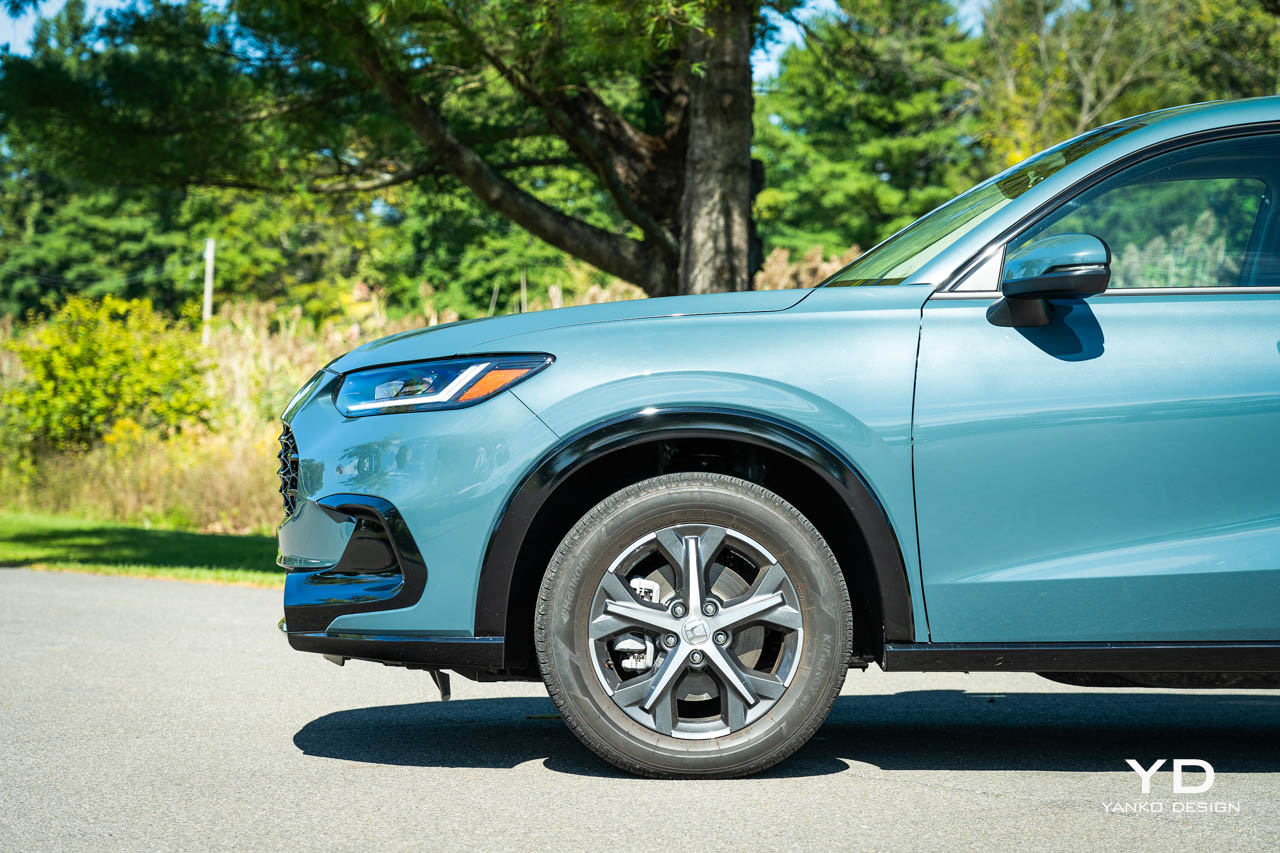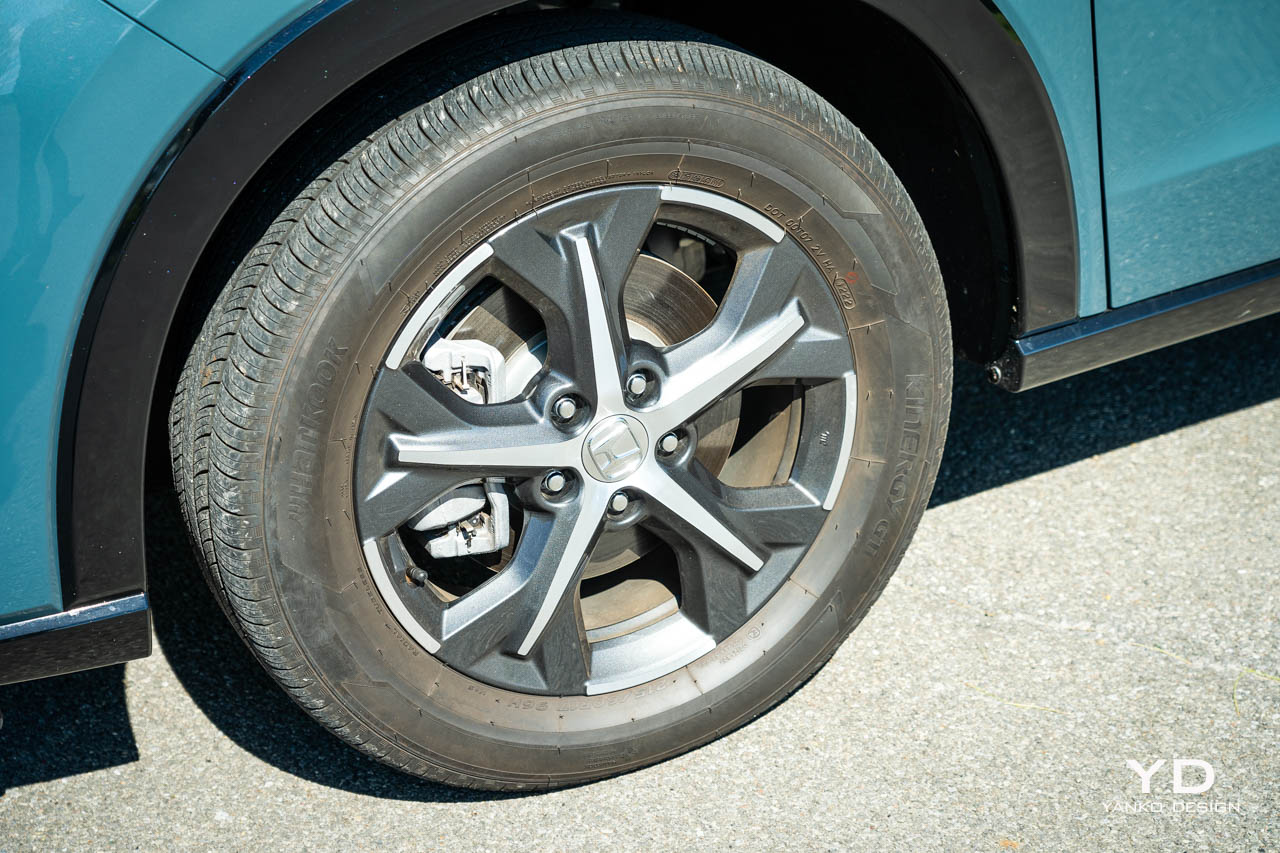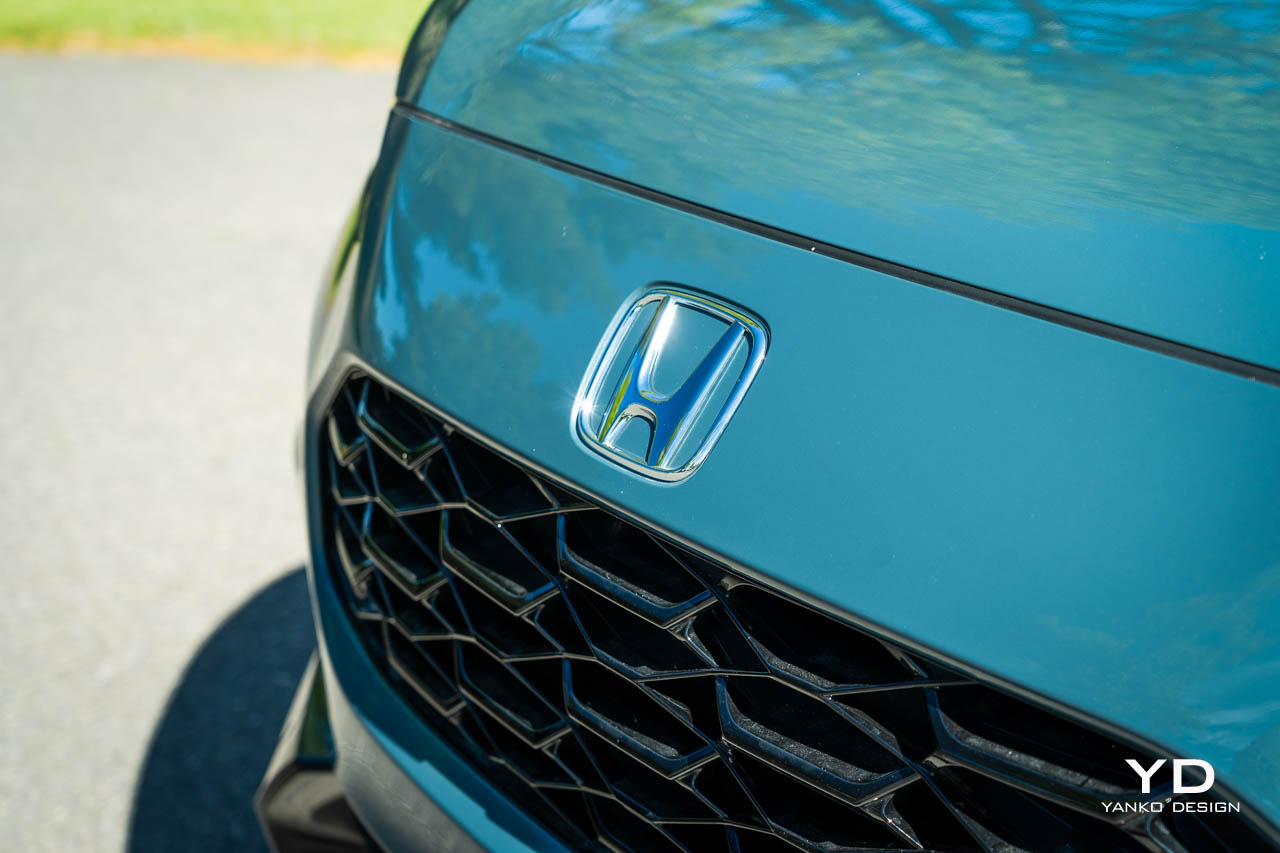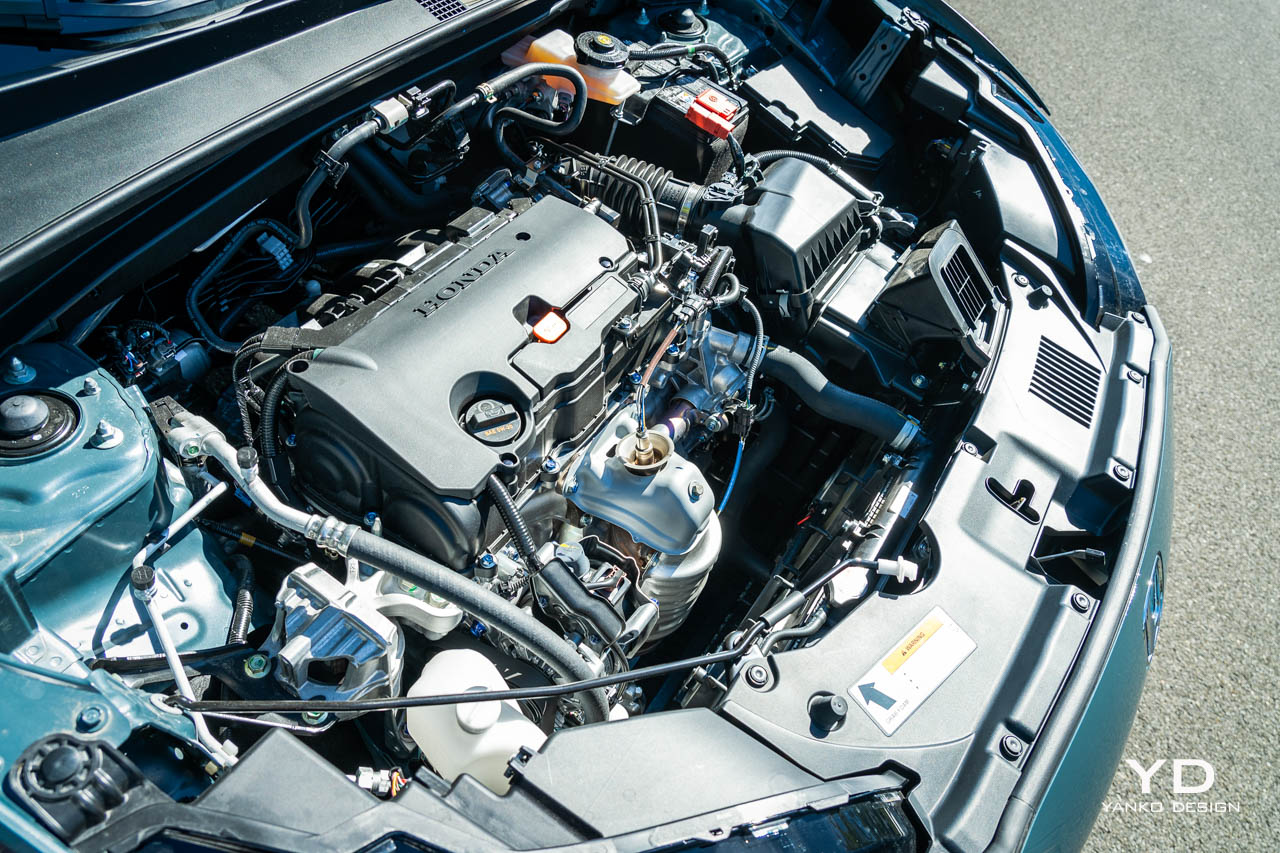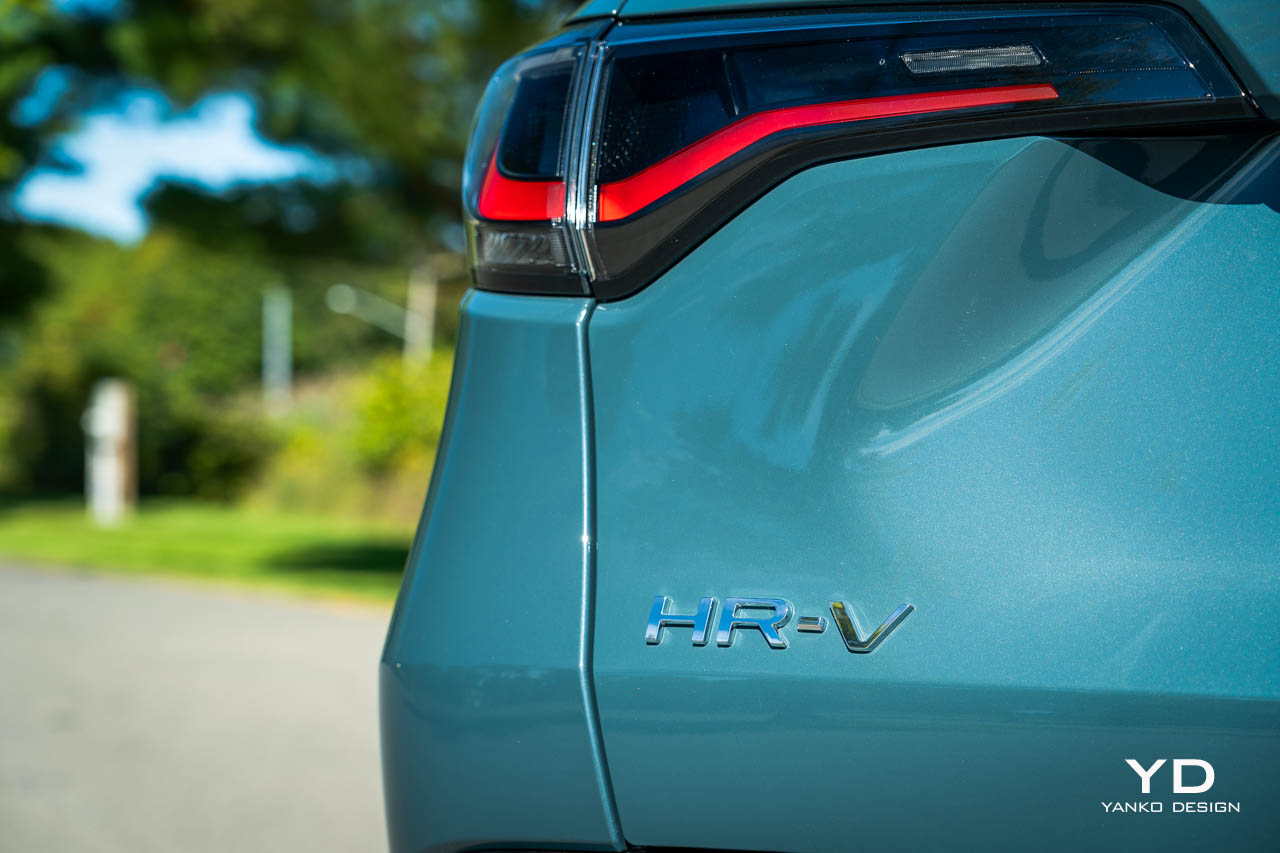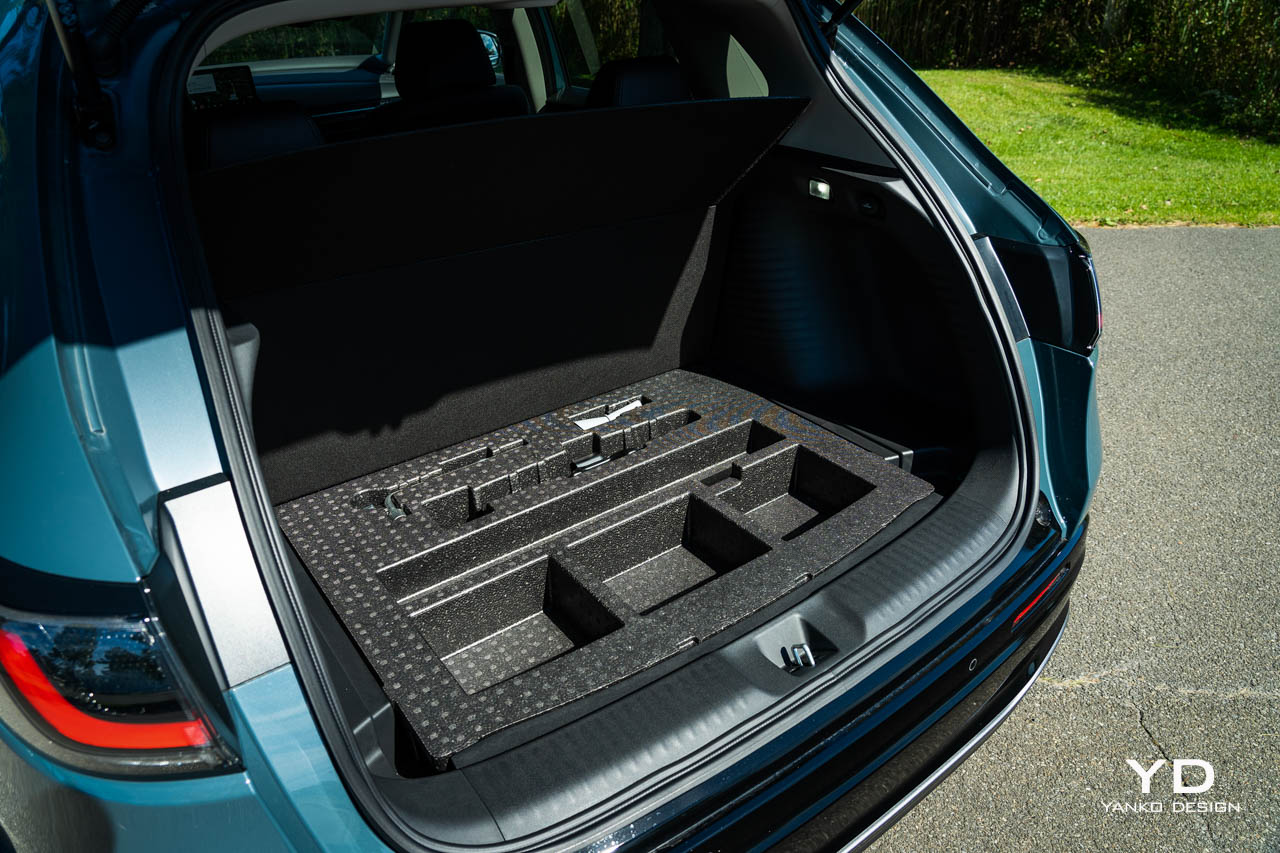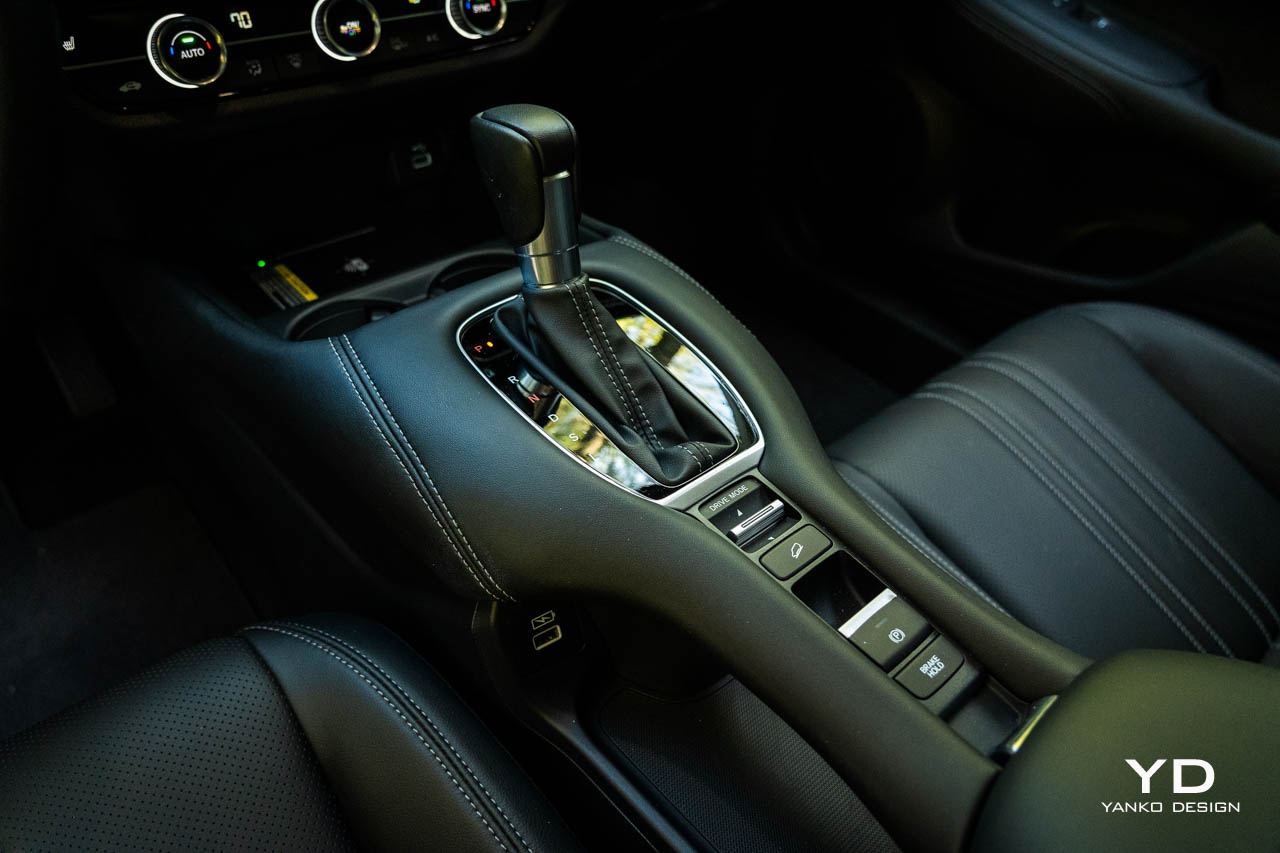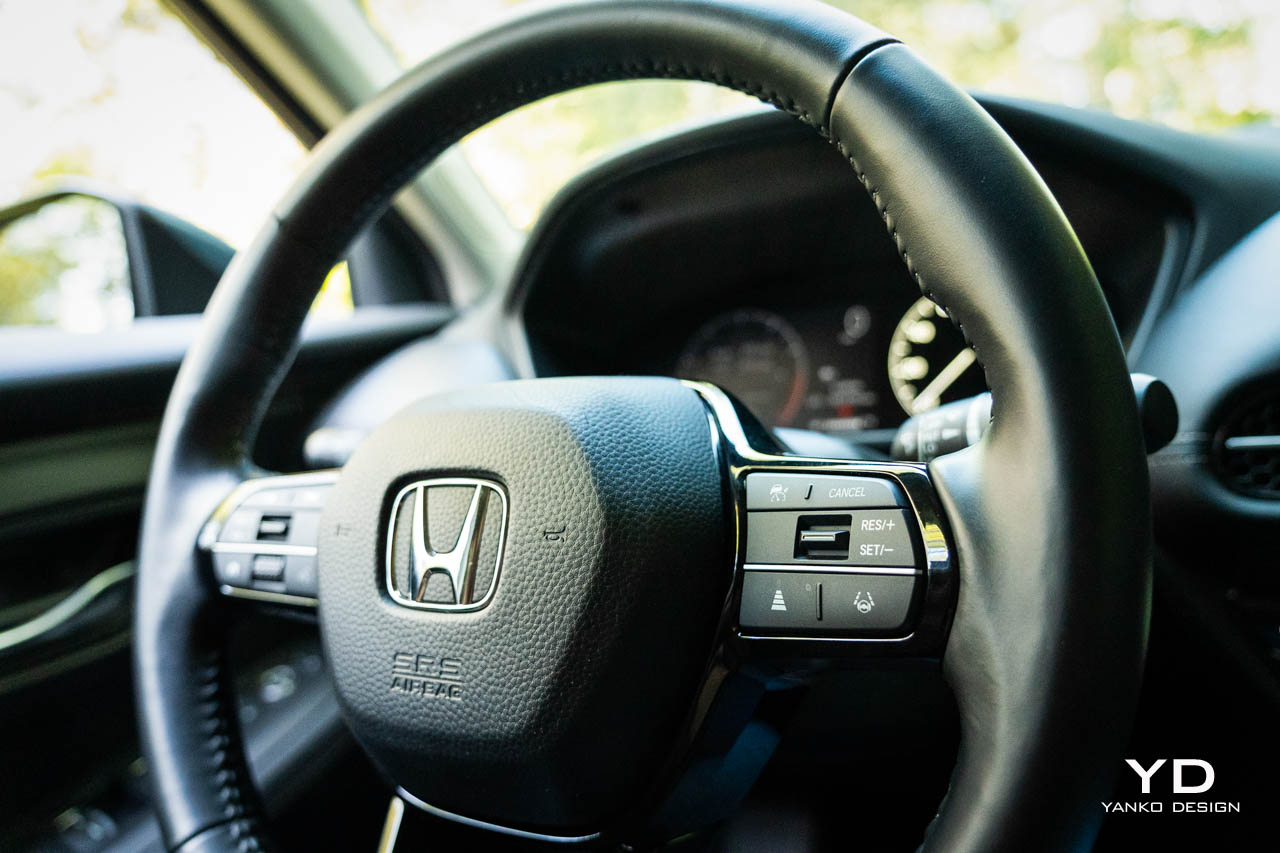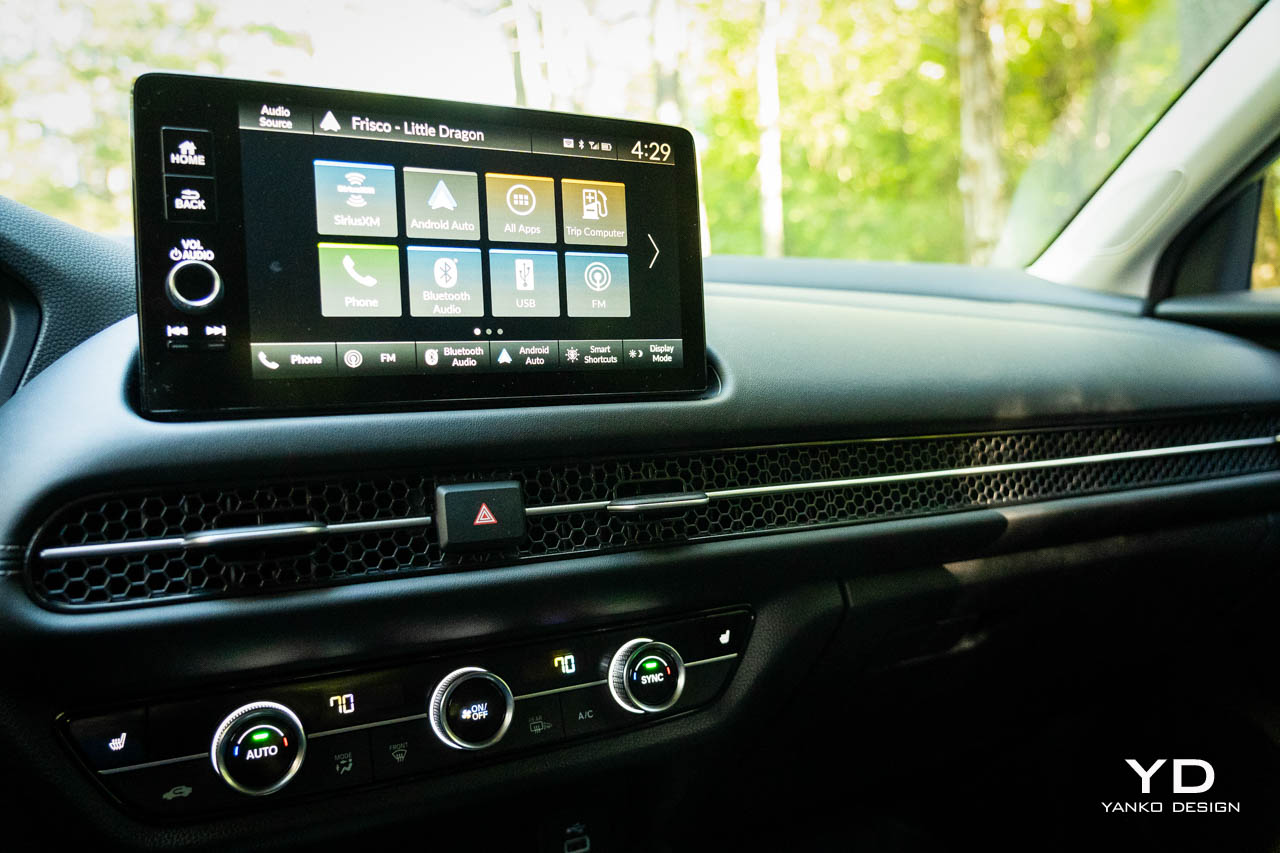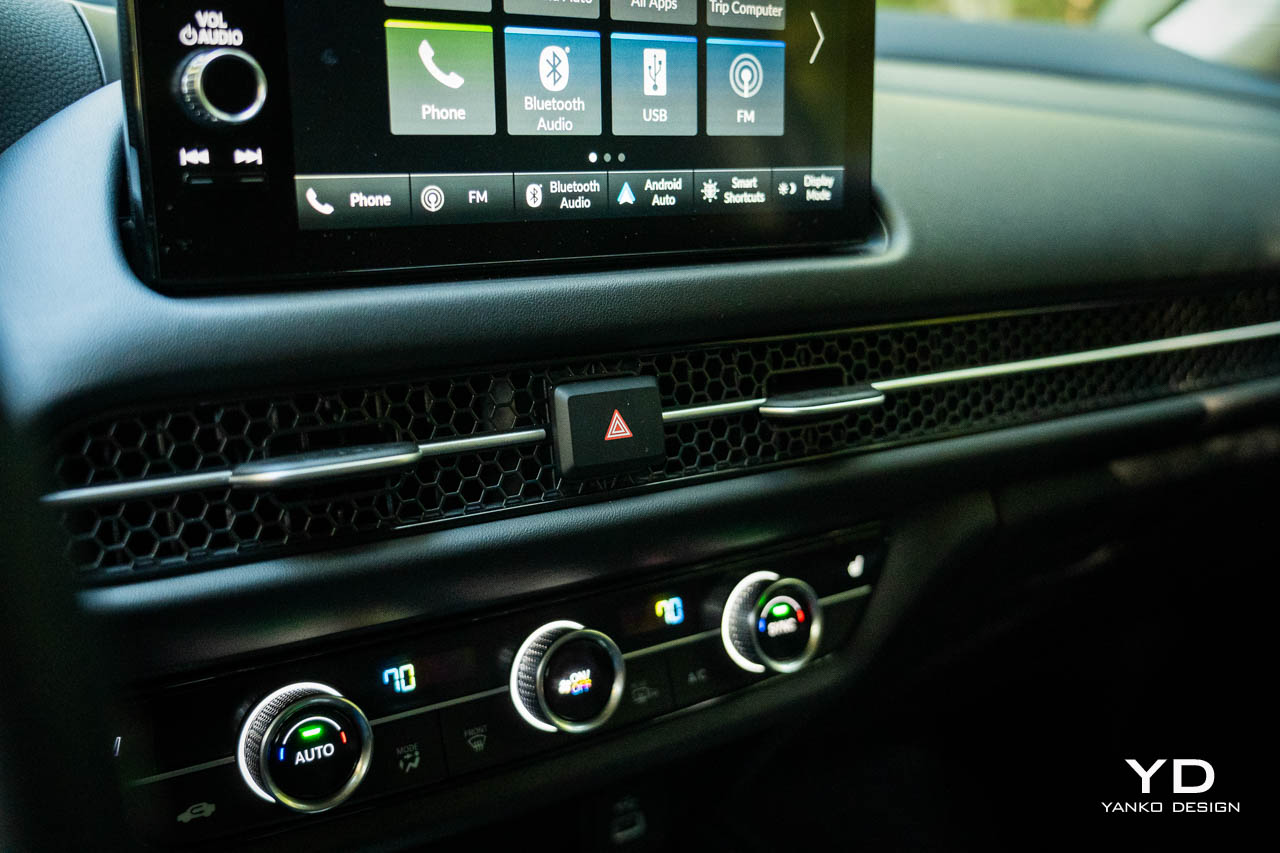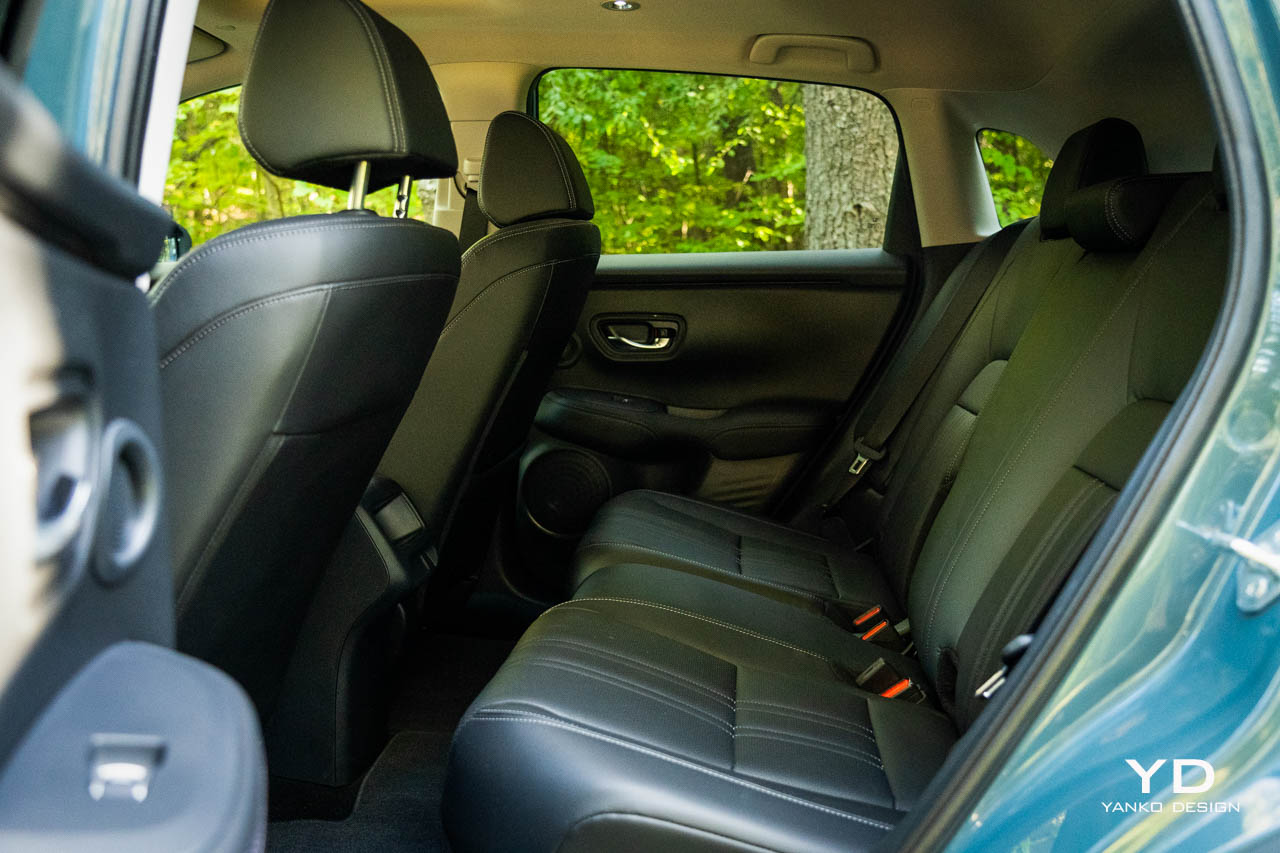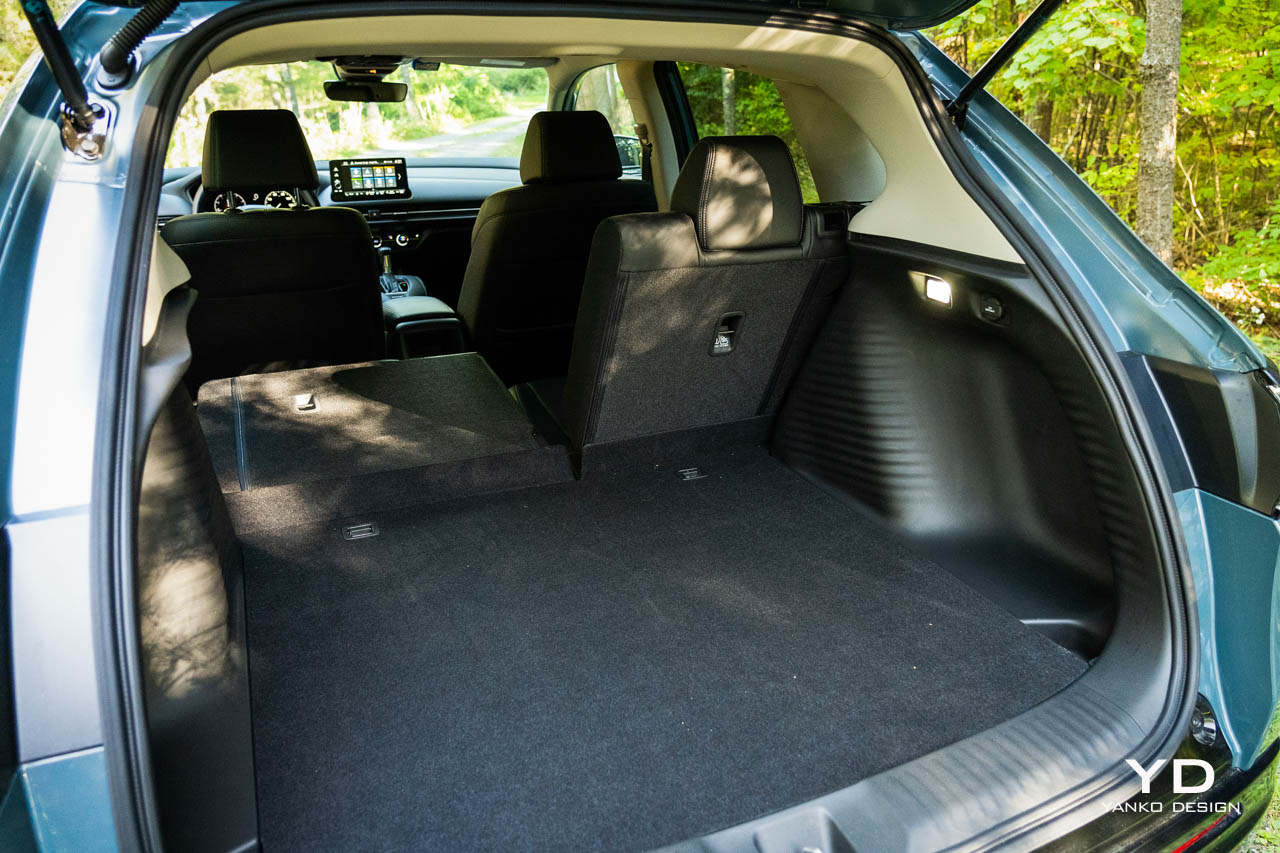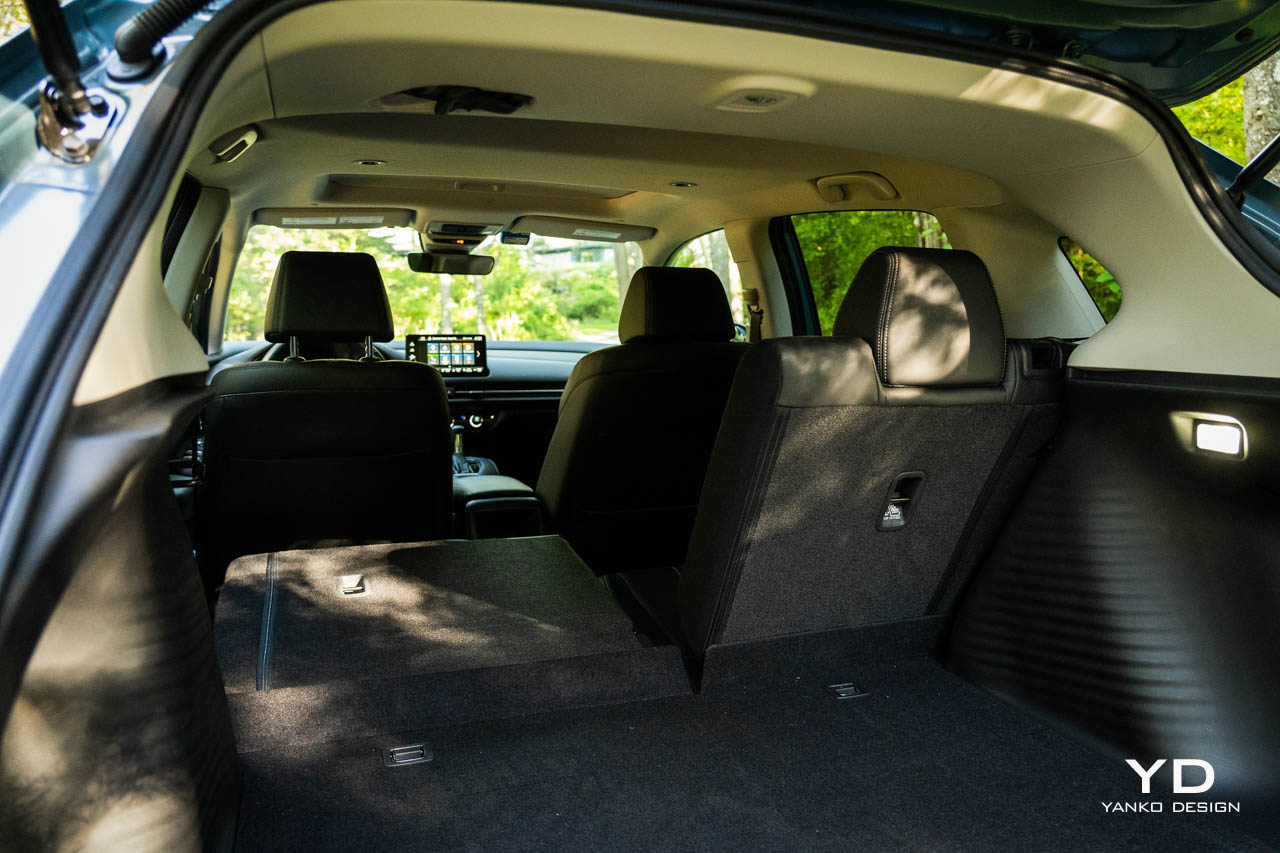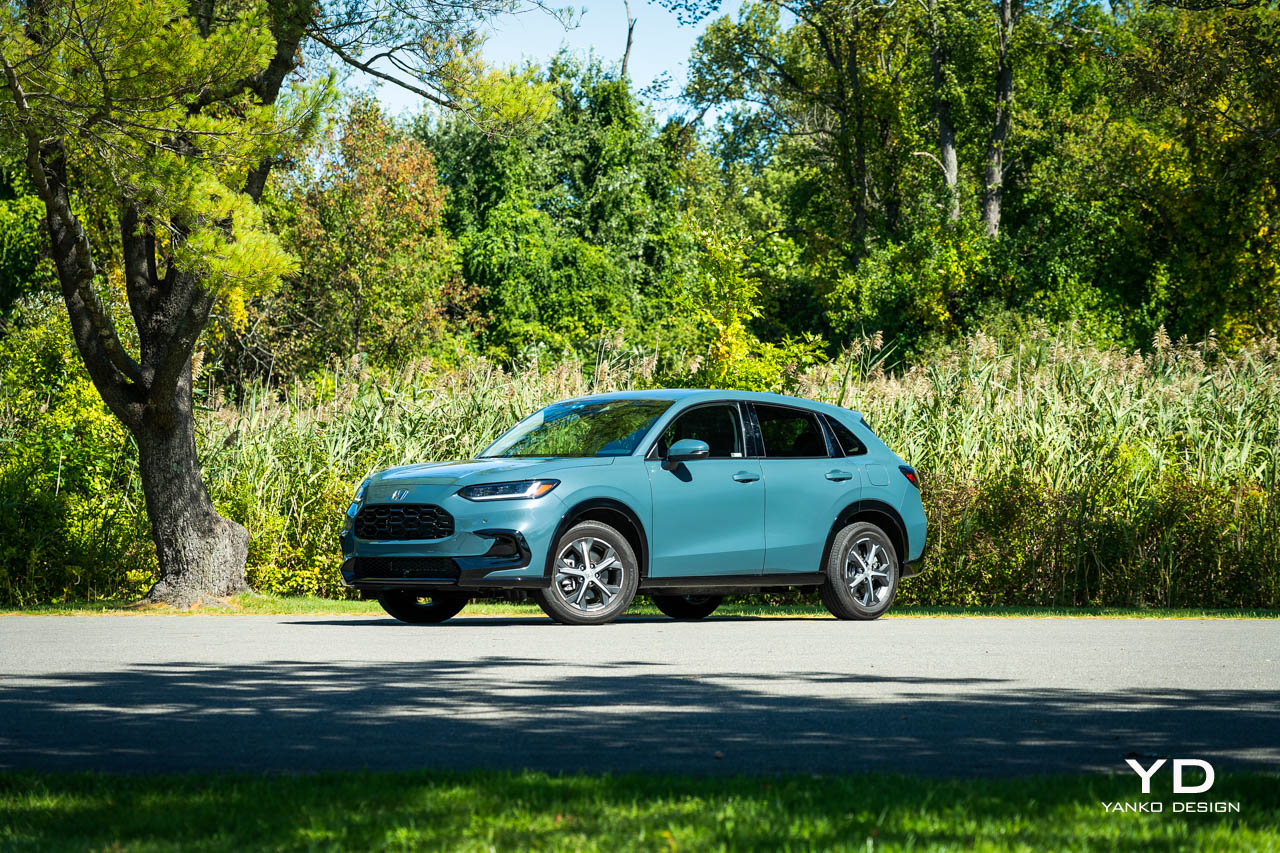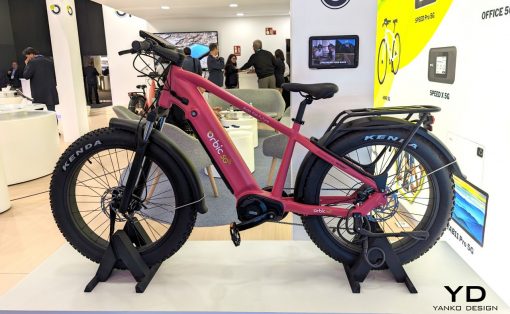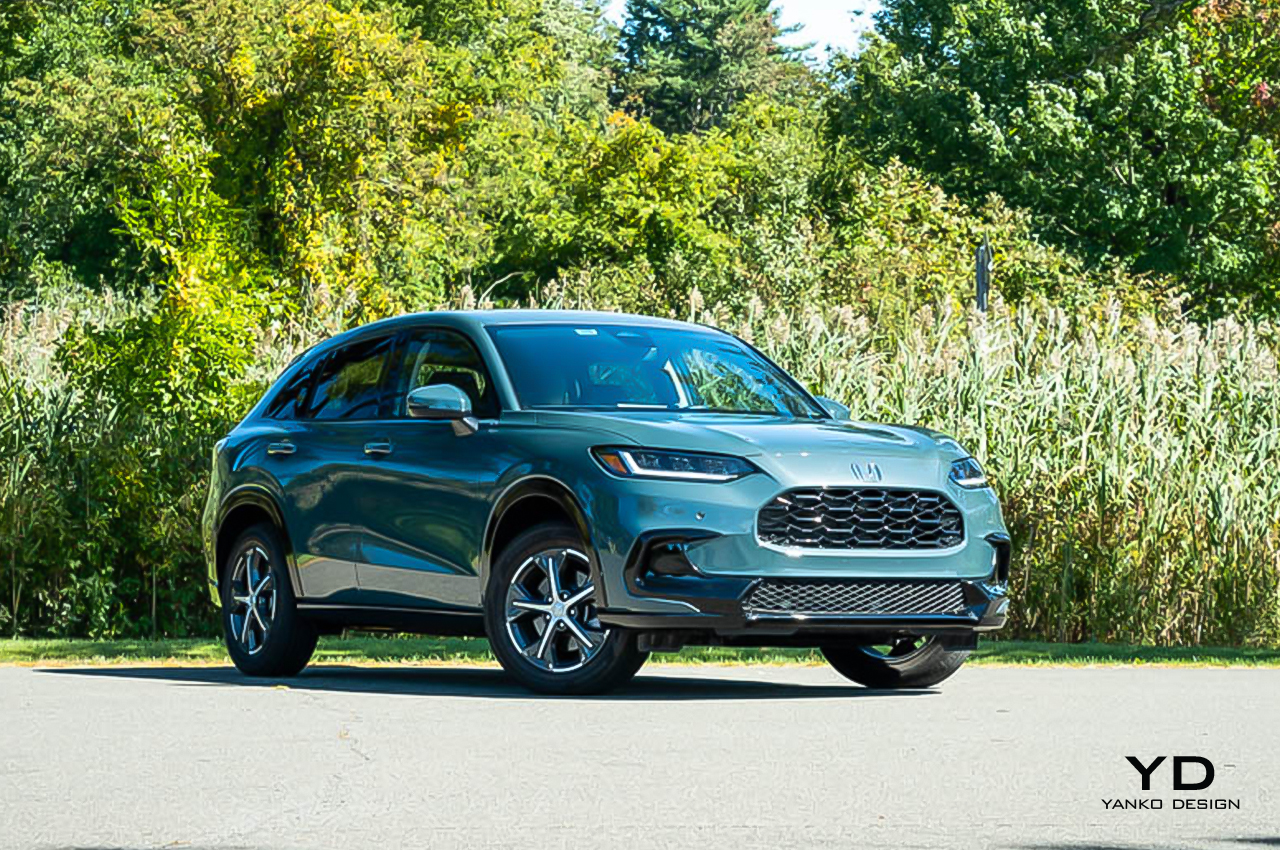
PROS:
- Smooth, comfortable ride
- Roomy cabin
- Great value
CONS:
- Underwhelming power
- Anonymous styling
- No Magic seats
Sometimes, growing up means losing a little bit of magic. Your outlook on life changes along with your priorities, as might your waistline, but at the end of the day you’re still you and, in many cases, a better you. Wizened, yes, but wiser too.
With the 2023 Honda HR-V, growing up quite literally means losing its magic — well, Magic Seats, anyway. But, despite that unfortunate omission, the latest flavor of Honda’s littlest crossover SUV is a nicer-driving, nicer-looking machine than what came before. An improvement, then? Let’s dive into the details.
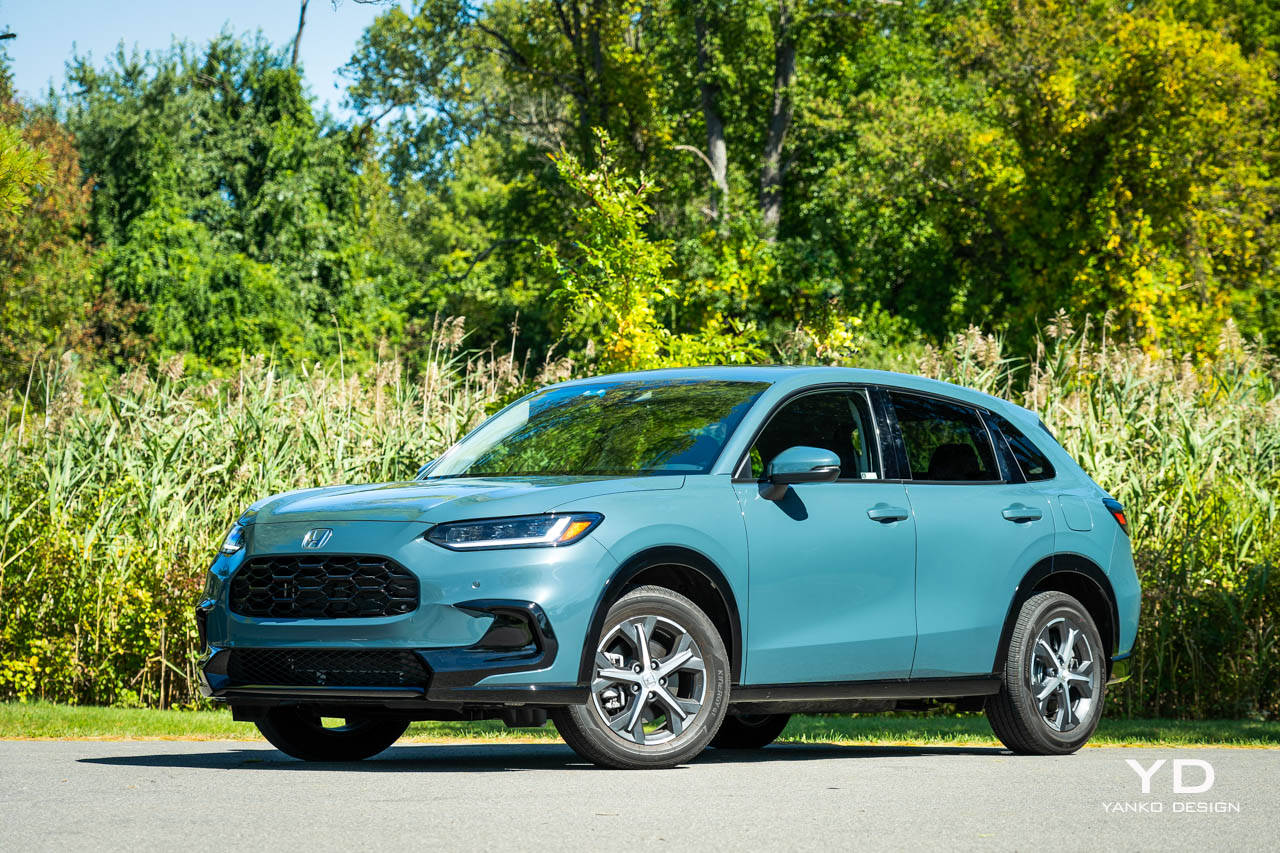
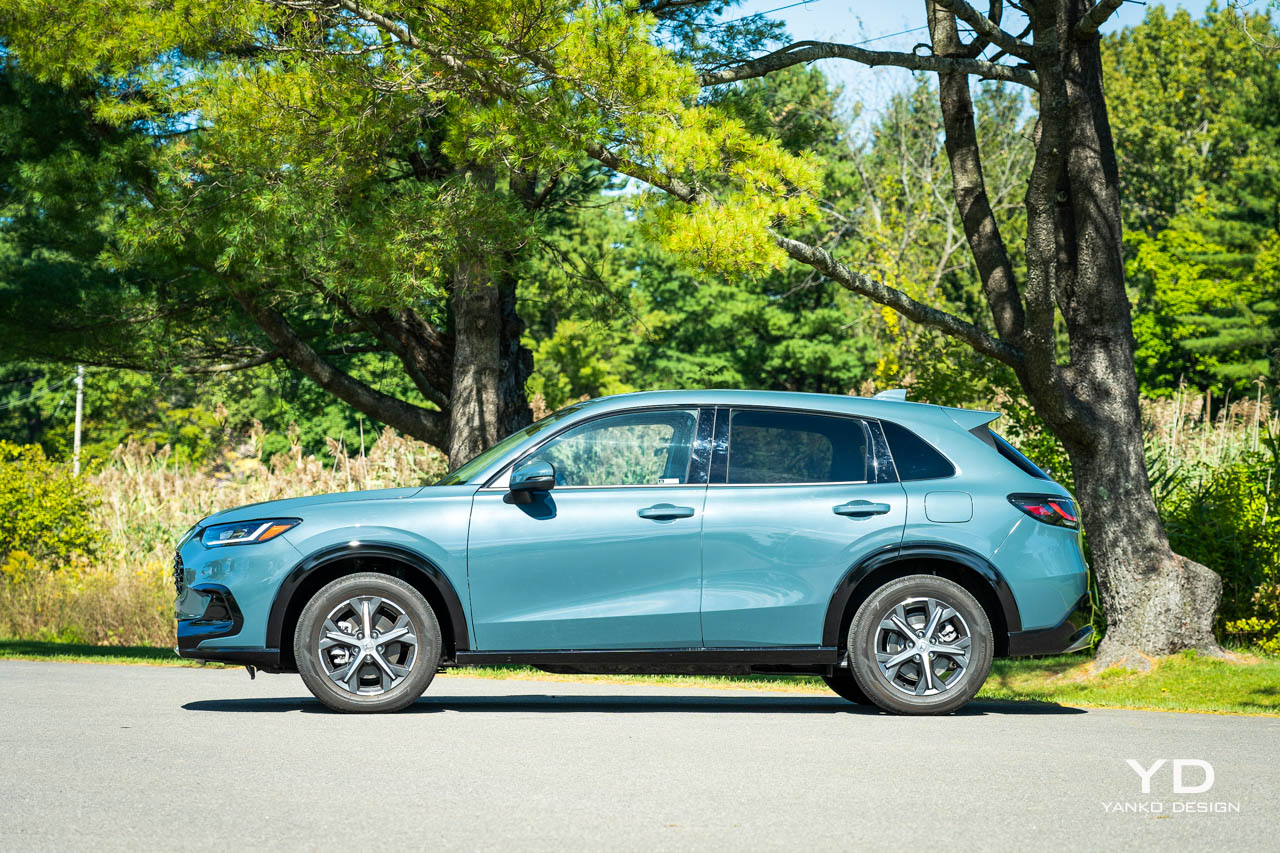
New Platform
The outgoing Honda HR-V, introduced in 2014 and refreshed in 2019, was based on the beloved Honda Fit. Serving as a slightly bigger, marginally more practical SUV flavor of Honda’s mini-MPV, it inherited the Fit’s great packaging and lively, if buzzy, dynamic.
This new HR-V is a very different beast. Now built on the same platform as the latest Honda Civic, it features a substantially different design inside and out, top to bottom. Certainly from the outside it looks radically different, bigger and frankly more pedestrian than before. Where the old car had an almost tall-hatchback vibe, the new one is all SUV.
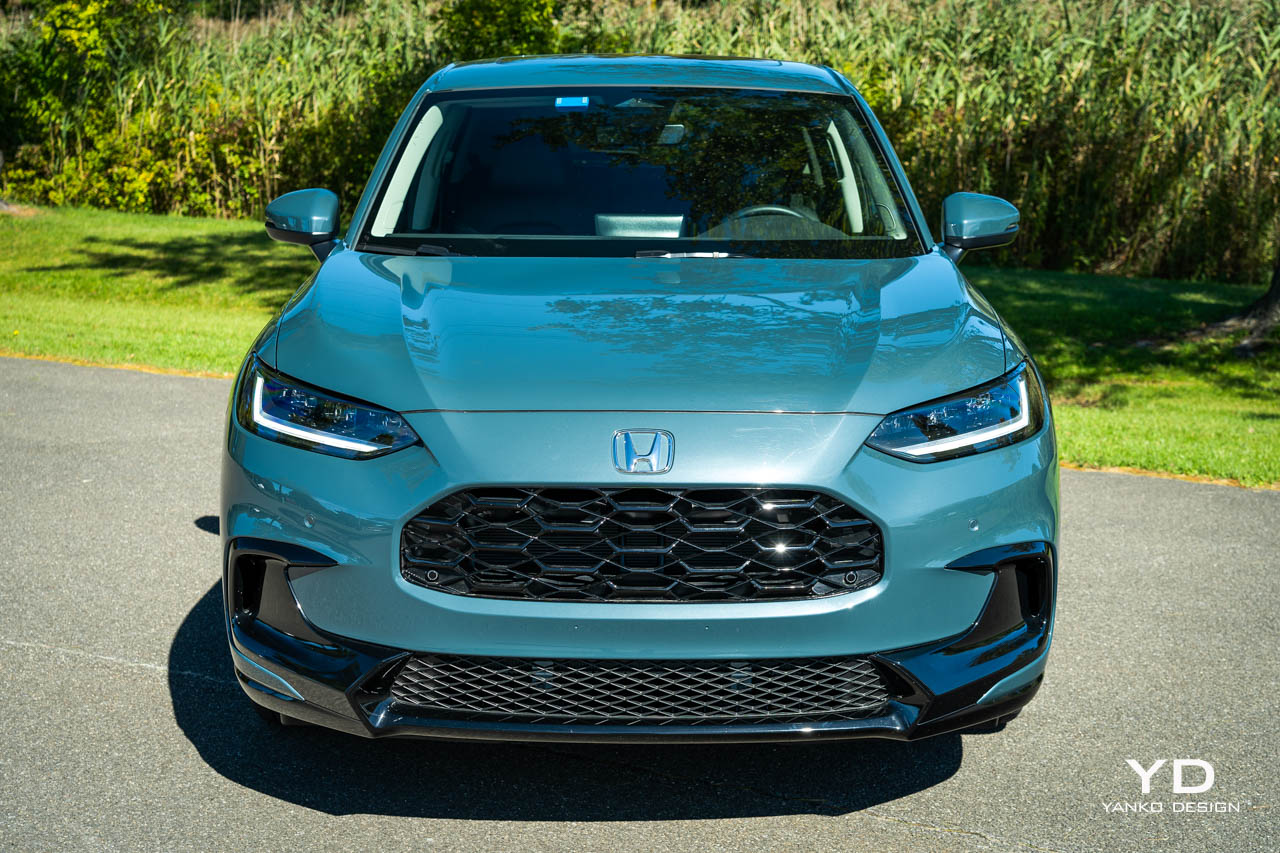
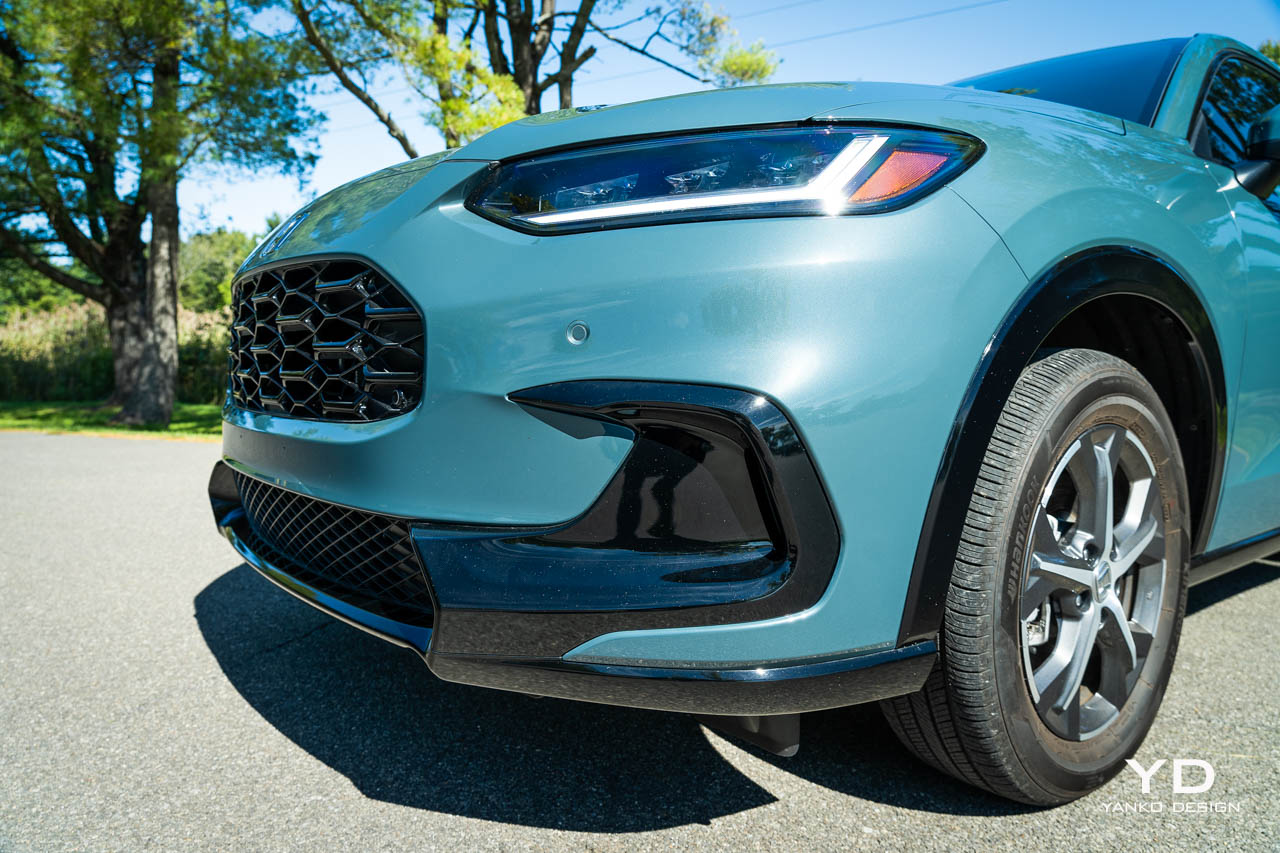
That’s not a bad thing, mind, and I do think it’s a handsome looking thing. The face of the car is simpler and cleaner without the chrome nose that the old car wore, and I like the way the new facia sculpts down aggressively to a well-defined, vertical grille.
From the side, well, there’s really nothing to differentiate this from any other little crossover on the market, but from the rear there’s a bit more intrigue, with wide tail lights wrapping nicely around to to the fenders, a clear organic shape with black inserts that pair nicely with the black trim that formers a border and a base for the entirety of the HR-V’s body.
Again, I think it looks quite good, especially in the deep, greenish-blue shade of Nordic Forest, which is about as accurate a name for an automotive color I’ve ever heard. While that shade will set you back an extra $395, it works well with all the black and the few bits of silver and chrome to be found.
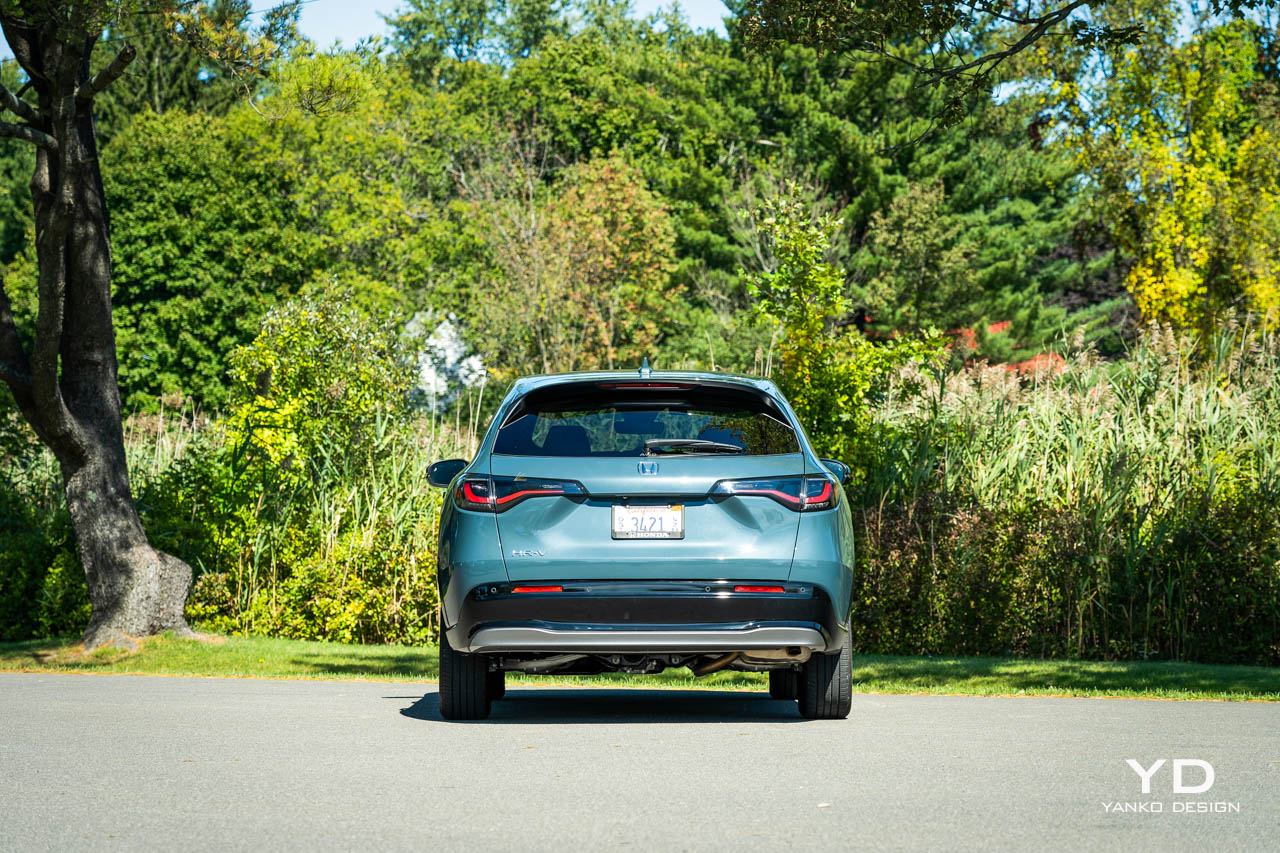
New Interior
On the inside, things are much darker. Much, much darker. The color scheme inside my test car was black on black on more black, a little bit of white stitching plus a few silver hints trying and failing to break up the monotony. An off-white headliner brightens things up just a little bit, but I’m going to go ahead and say that if you suffer from Seasonal Affective Disorder, this may not be the interior for you. (There is a light gray interior available, but only on the top-shelf EX-L trim.)
Despite the monotone look, it’s actually a very nice interior, a massive improvement both in terms of layout and features than before. And, frankly, it does look good, especially the sweeping, honeycomb vent that runs nearly the entire width of the dashboard, borrowed from the new Civic and looking just as classy here as it does there.
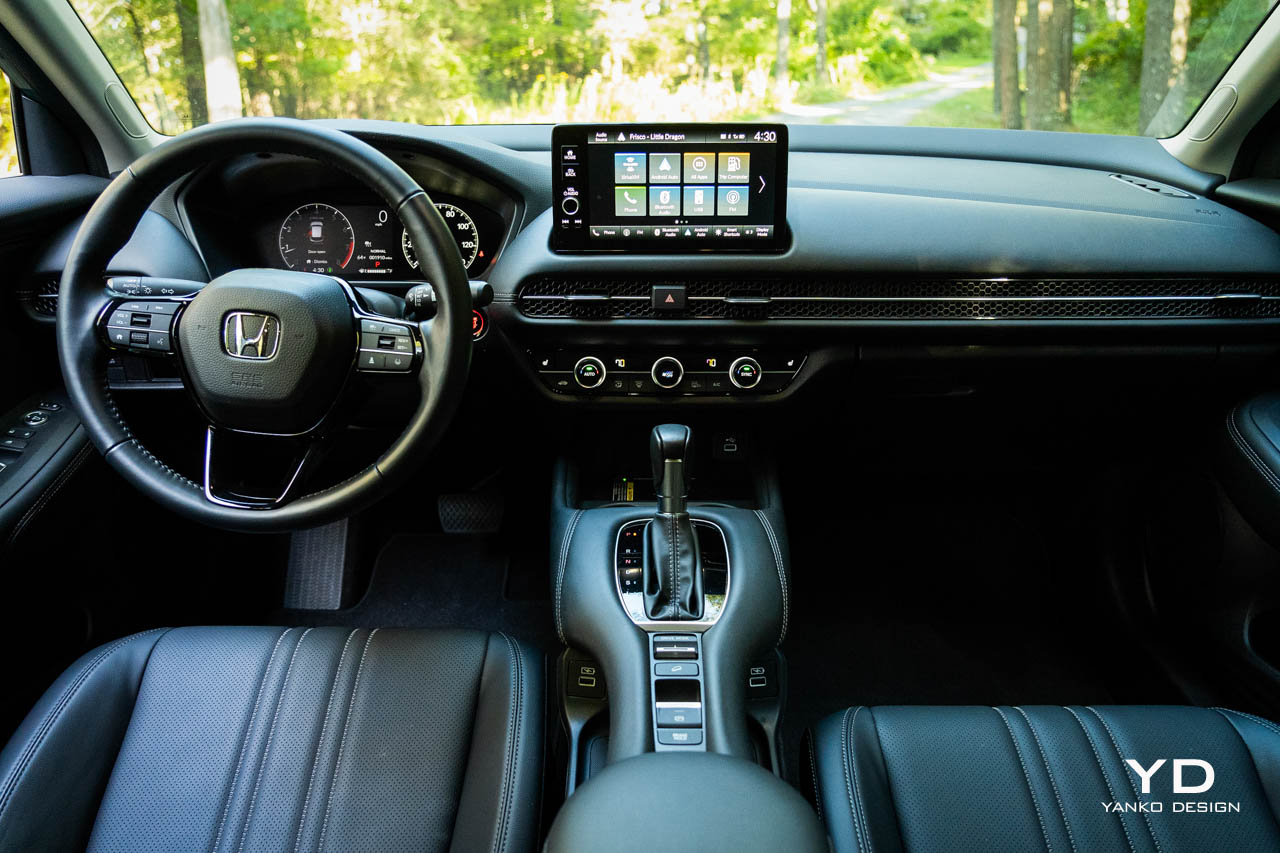
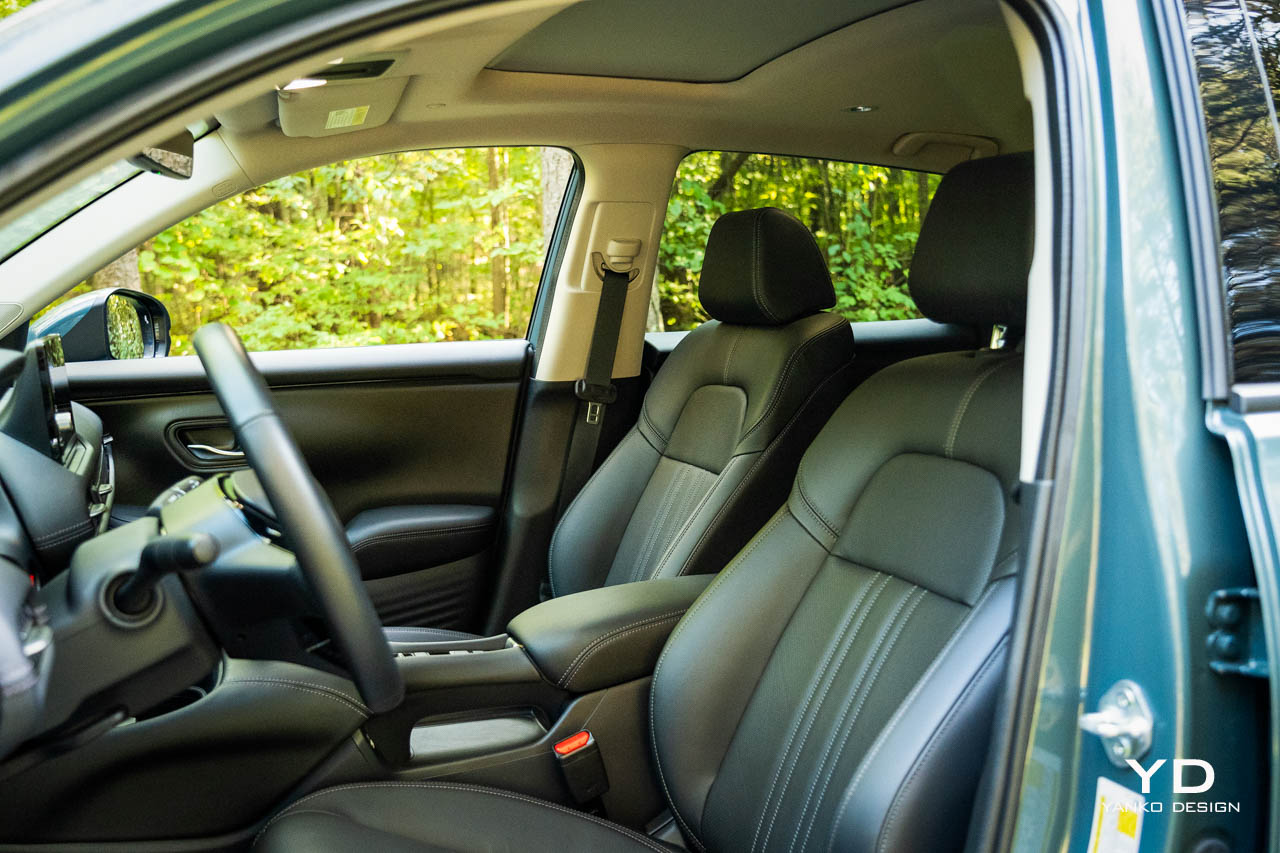
The 9-inch infotainment system sits perched above that, again familiar Honda-spec stuff but easy to use and responsive, and blissfully featuring a volume knob, something missing on the first HR-V. Both wireless Apple CarPlay and Android Auto are on display, and the HR-V integrates nicely with them, pulling turn-by-turn directions out and adding them to the gauge cluster.
That gauge cluster, meanwhile, is half digital, multi-function LCD on the left handling tachometer duties, seamlessly blending into a physical speedometer needle on the right.
Inset in the tacho is a selection of information ranging from trip details to navigation, as well of course as all the various active safety settings, which I’ll delve into in just a moment. I find this half-digital layout a bit odd, if I’m honest, but it works well and presumably saves a few bucks somewhere along the line.
The center console in the new HR-V has been completely redesigned, shifter now sitting on an arched section that flows seamlessly back to the driver’s armrest. That arching shape creates room for a small cubby underneath, with a pair of USB-A ports sticking out at odd angles on either side. Another USB-A port is situated ahead of the cupholders and next to a Qi wireless charging pad. Rear-seat passengers, though, will have to make do without even a single USB port. (There is at least a 12-volt way back in the hatch, but that won’t help your compatriots much.)
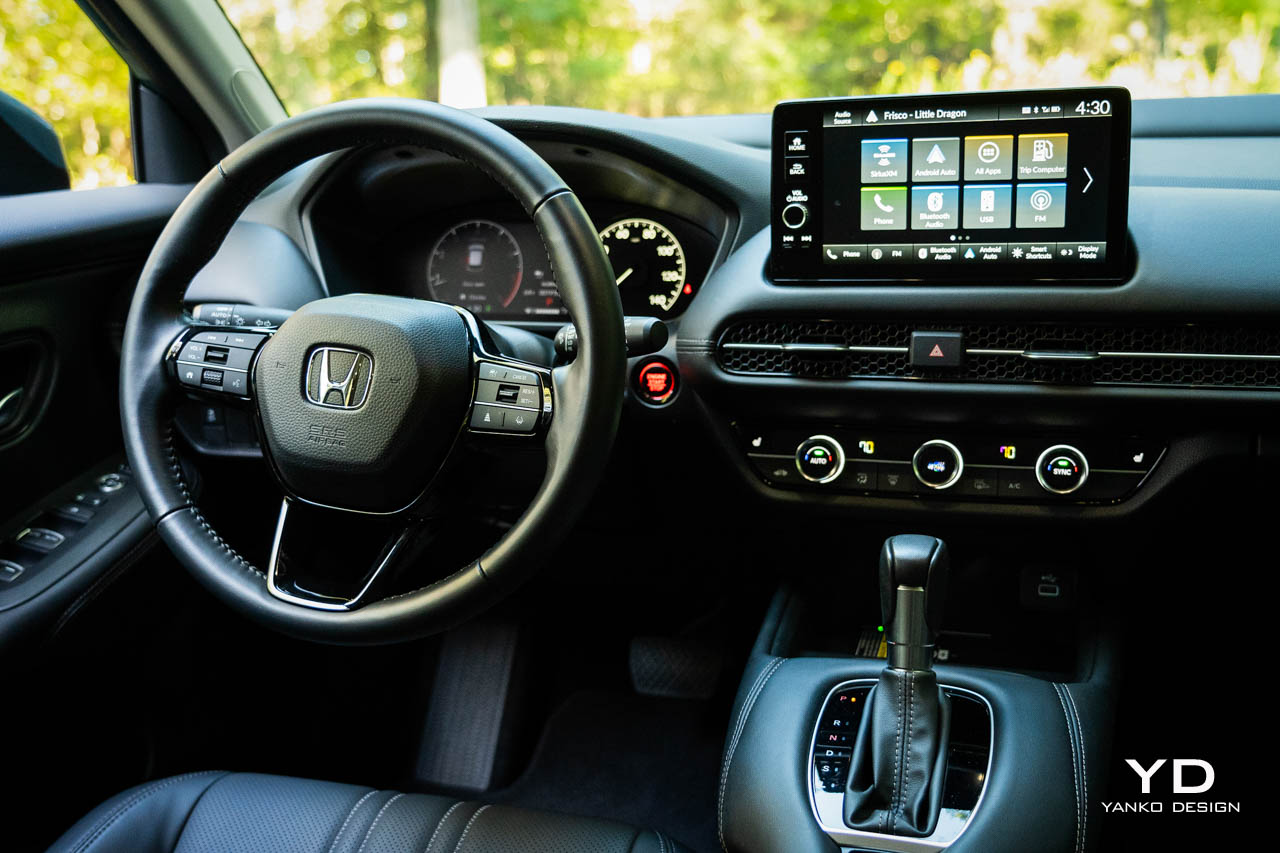
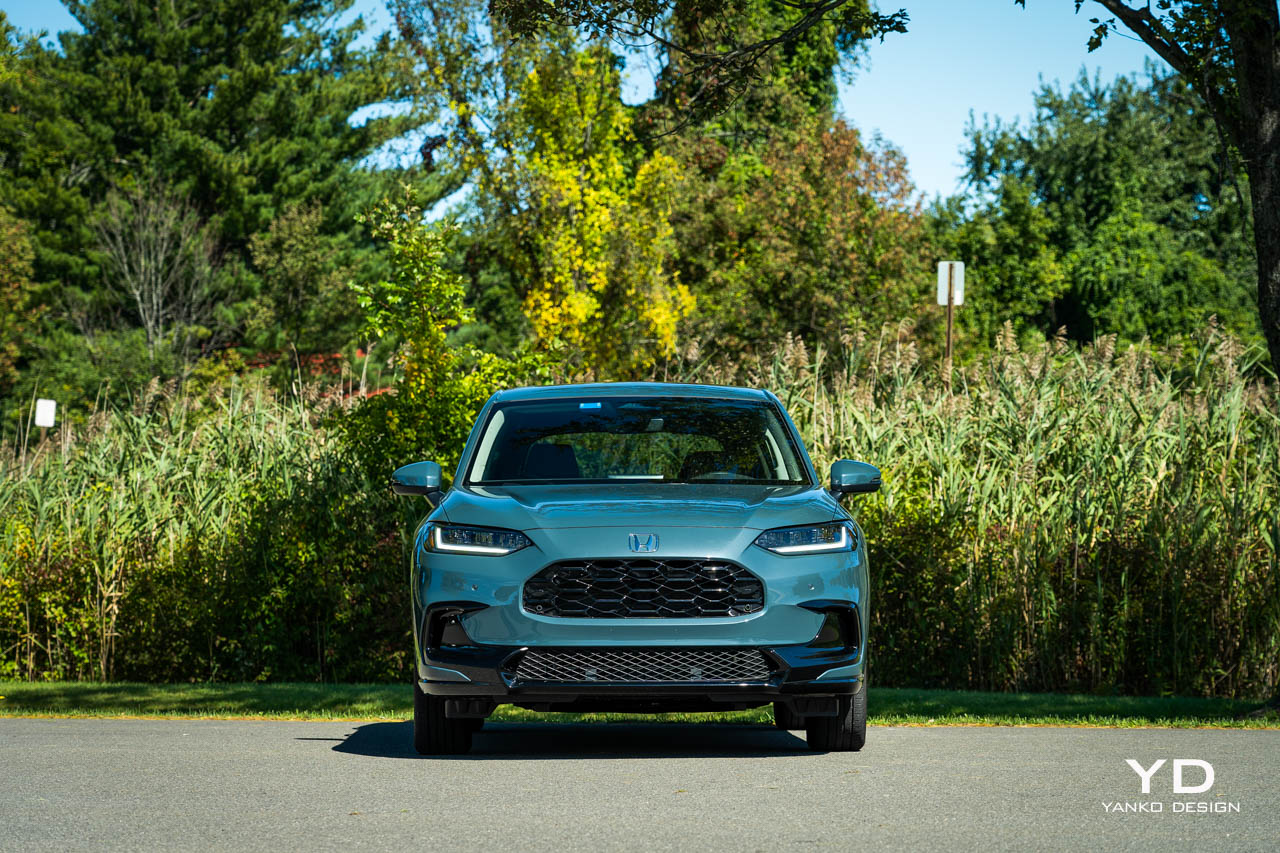
The bigger change out back, though, is the aforementioned loss of the Honda Fit’s Magic Seats. Though the name was somewhat hyperbolic, those seats really were pretty special, folding up to make room for tall objects or folding flat to provide lots of cargo space. In the new HR-V, those seats fold only flat.
They do so easily and nicely, opening up 55.1 cubic feet of cargo space, down from 57.6 on the old car. But, when the seats are up, there’s plenty of room for rear-seat passengers. I’m six-feet tall with short legs and I had plenty of headroom and oodles of legroom, even with the driver’s seat positioned exactly where I’d have liked it.
The front seats, too, are comfortable and roomy, power adjusting on the driver’s side, manual for the passenger. Despite the sunroof there’s an abundance of headroom up front, too, and good visibility throughout.
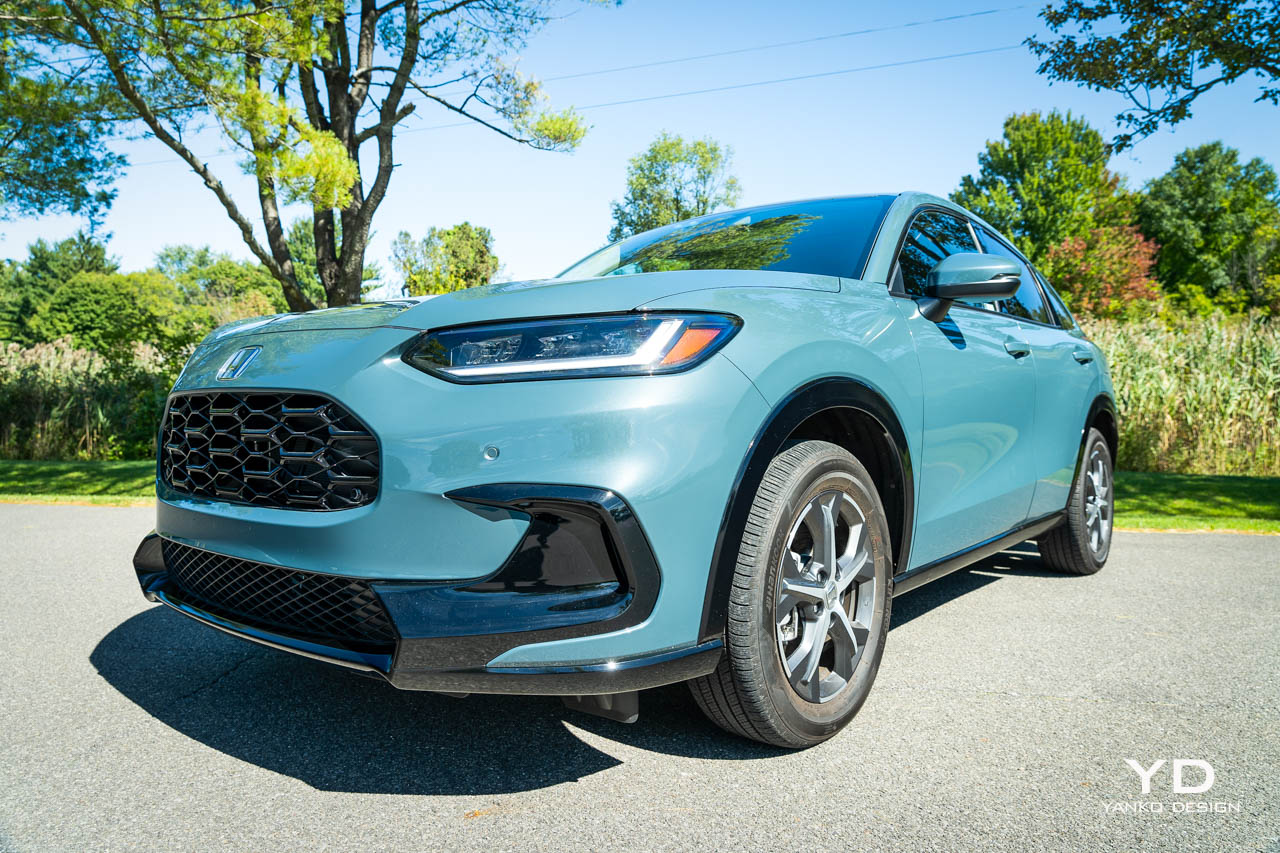
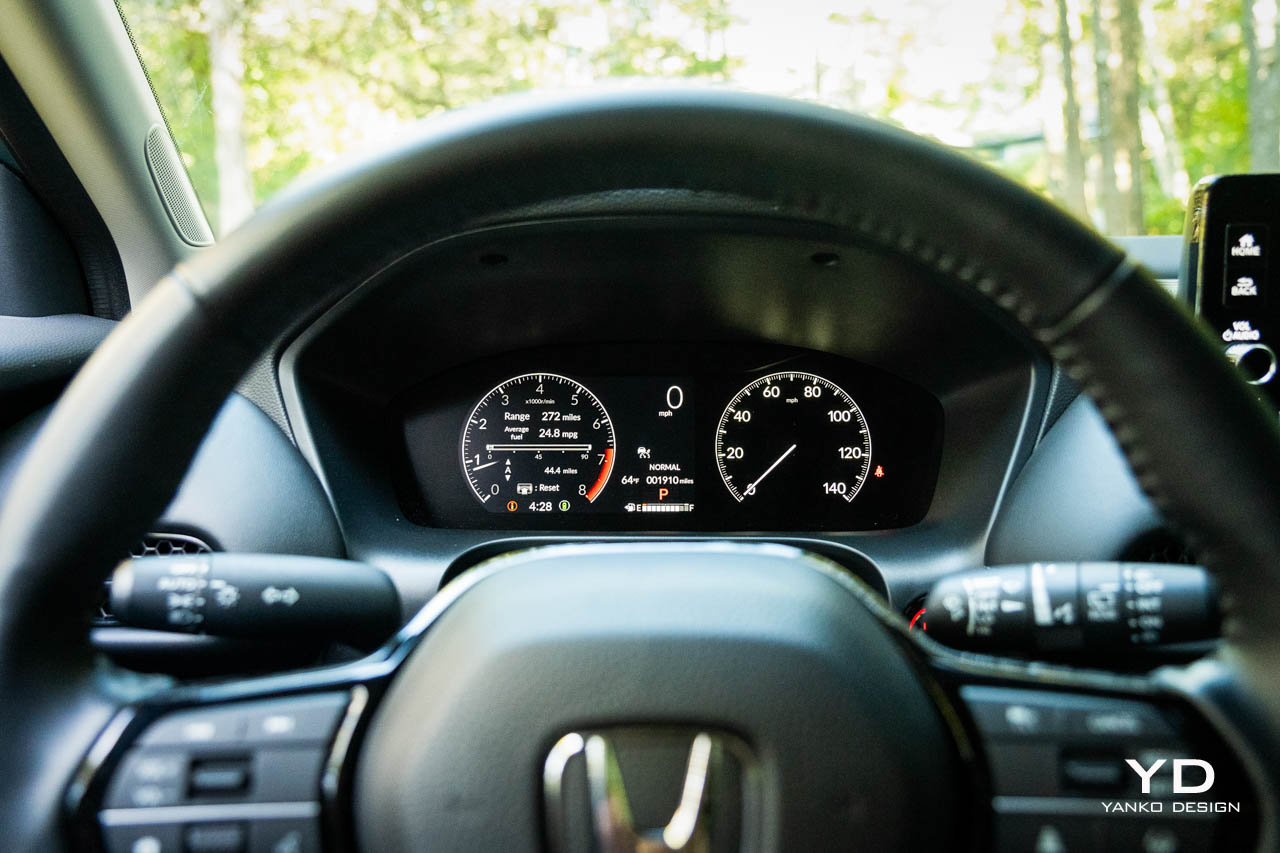
New Drive
Buckle up, hit the Engine Start Button, slot the shifter into D, and you’ll quickly realize this feels very different. In terms of driving dynamics, there’s little here to compare to the old HR-V. Though the previous one was far from bad, this one’s very good. Mostly.
The suspension and overall ride quality are the biggest changes. The HR-V rides with a poise and composure that’s unusual for an SUV of this size, soaking up road imperfections with no complaint or negative feedback transmitted to the driver. Even on the worst roads I could find, the HR-V was perfectly comfortable, handling maybe skewing a little too far to the soft side but it’s still an engaging thing to drive.
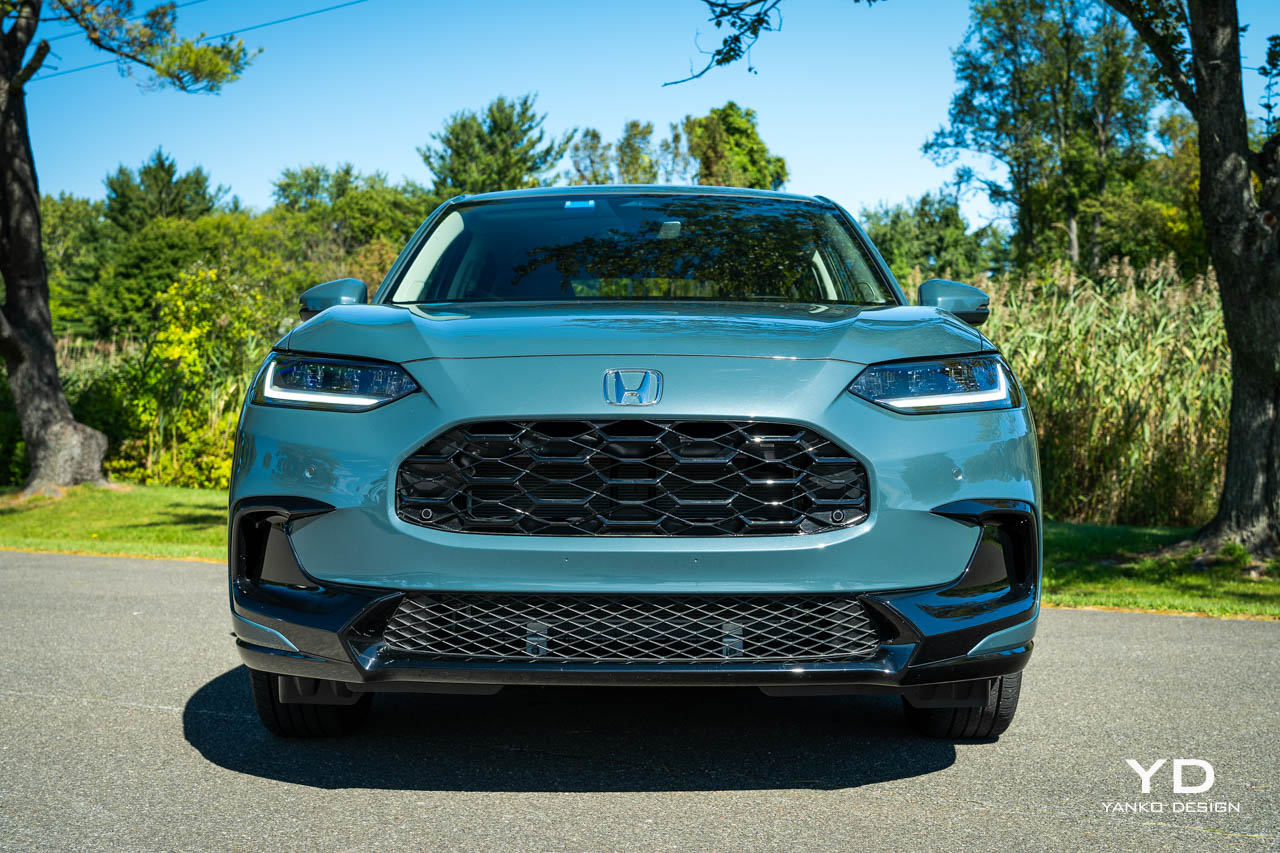
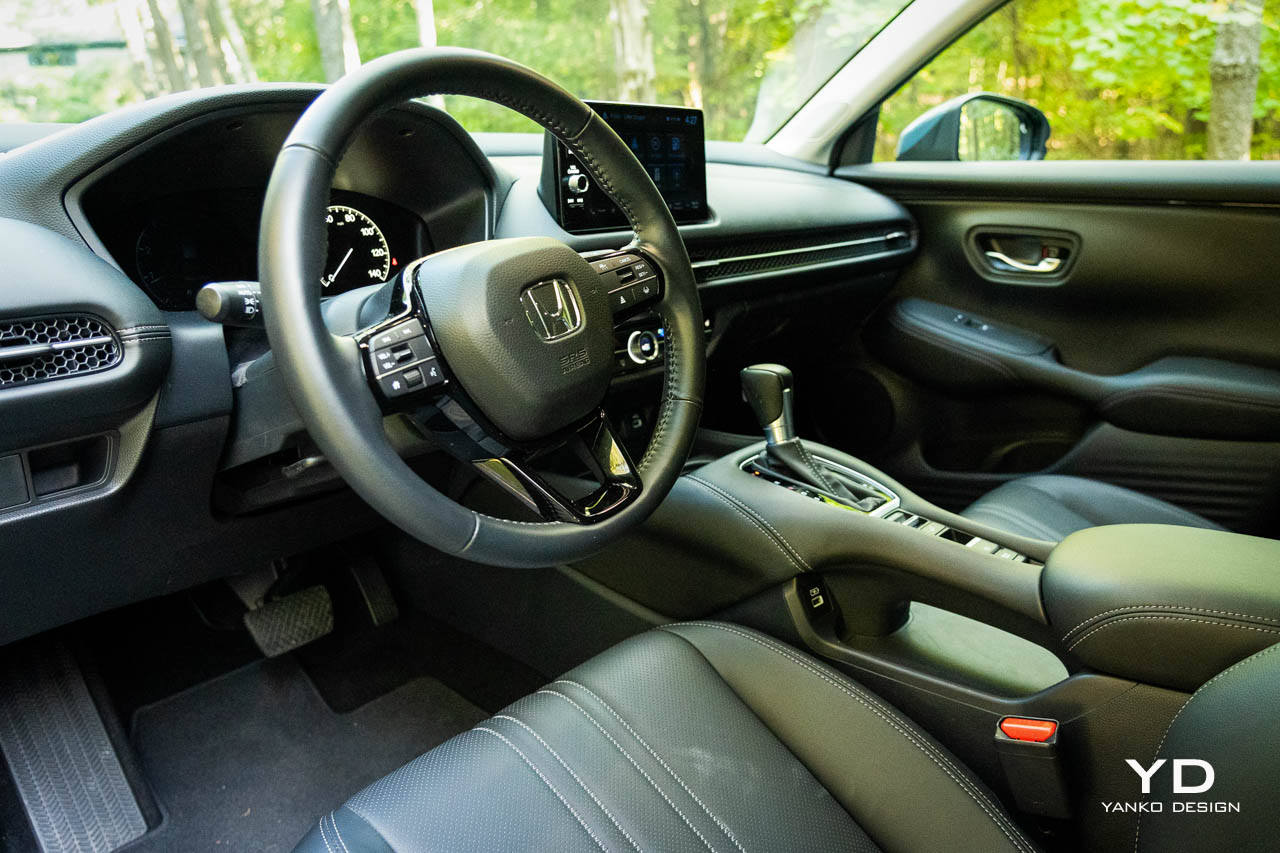
Really, other than a bit of road noise coming through on broken surfaces, there’s little to tell you that you aren’t driving a car costing far more than this one’s $30,590 as-configured price. But, get on the accelerator and you’ll get a noisy reminder.
The 2023 Honda HR-V is powered by a 158-horsepower, 2.0-liter four-cylinder paired with a continuously variable transmission and all-wheel drive. CVTs and AWD systems both have a tendency to suck the life out of small-displacement engines. Saddling the poor two-liter four-pot here with both leaves it really struggling.
Try to accelerate hard and you’re greeted with more noise than thrust, transmission running up to redline and staying there until you take mercy on the thing and lift. It is, suffice to say, not a particularly engaging acceleratory experience.
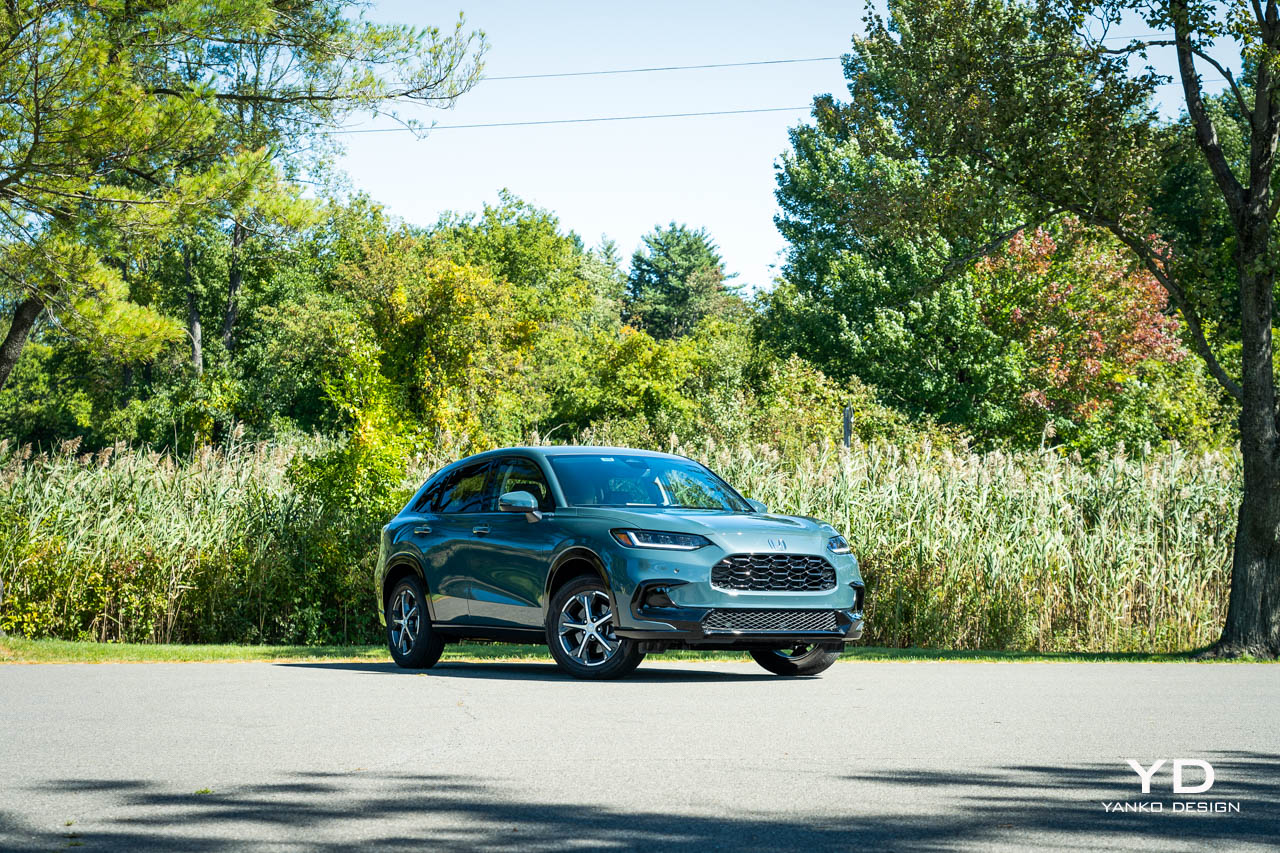
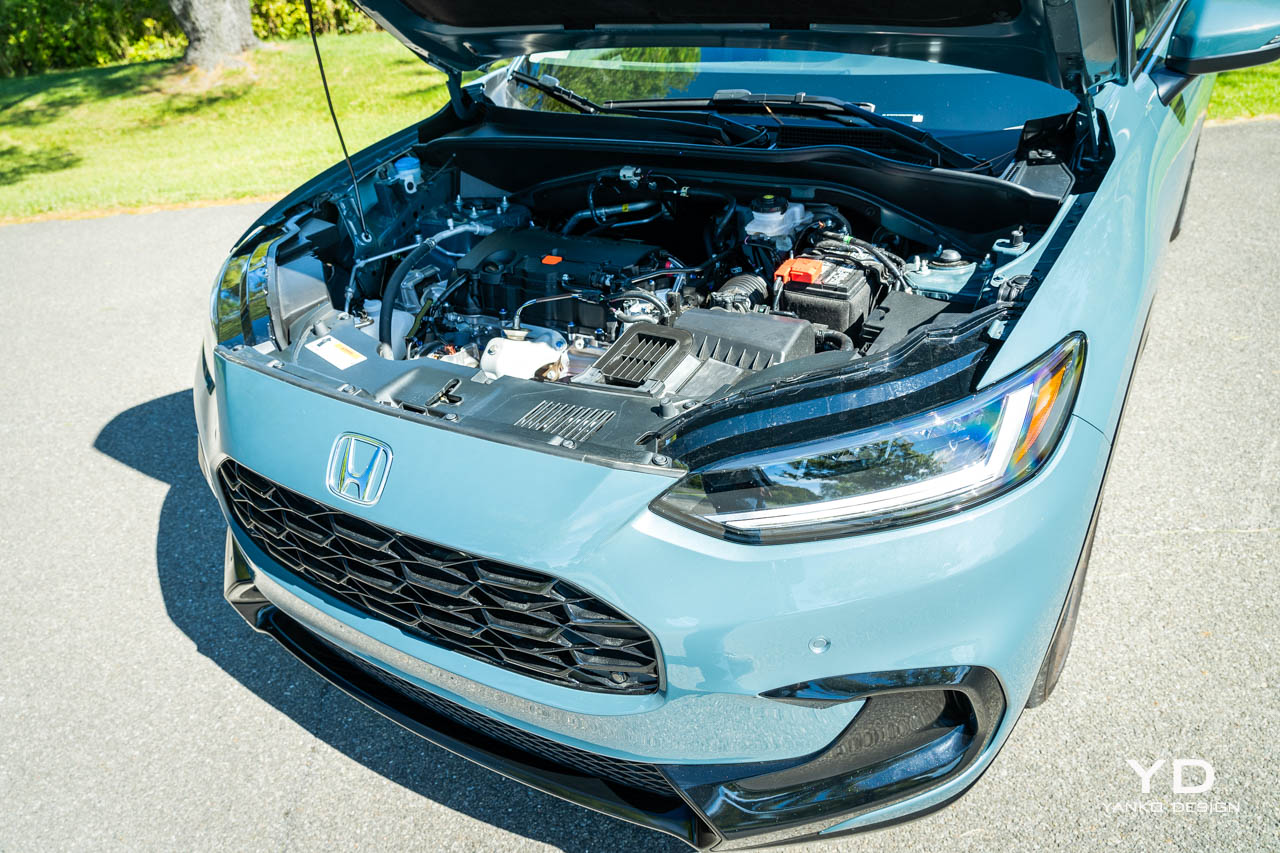
That’d be okay if it were particularly frugal, but it sadly isn’t. The HR-V is EPA-rated for 25 mpg in the city, 30 on the highway and 27 combined. That’s down one point across the board compared to the 2021 AWD HR-V. In my mixed testing I averaged 24.8 mpg, and other than a few quickly aborted acceleration tests I was not pushing hard.
Honda doesn’t yet offer a hybrid flavor of the Civic nor the HR-V, but I think such a system would do wonders both for efficiency and driving dynamics here. There’s what appears to be room for an entire second engine under the hood of the car, so while nothing’s been announced, hopefully Honda plans to do something with all that space.
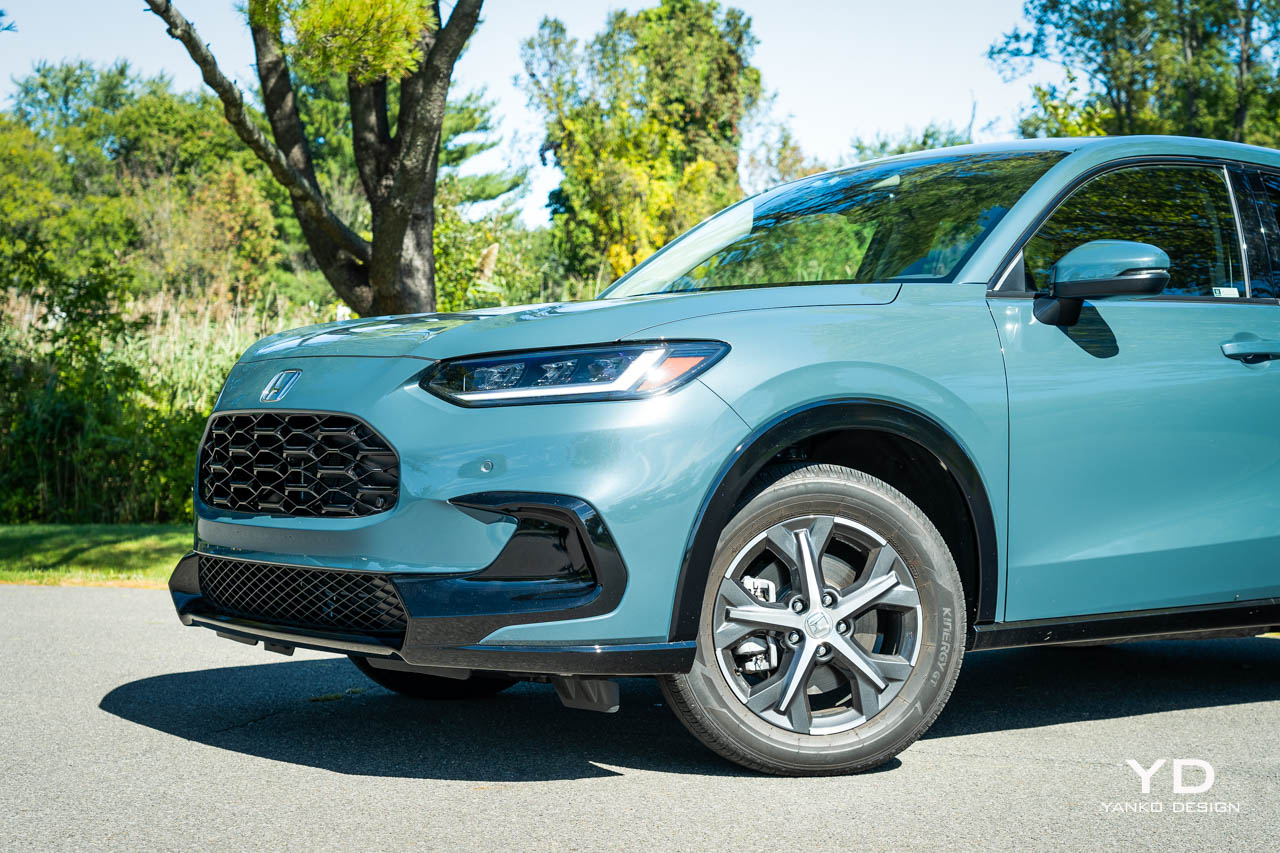
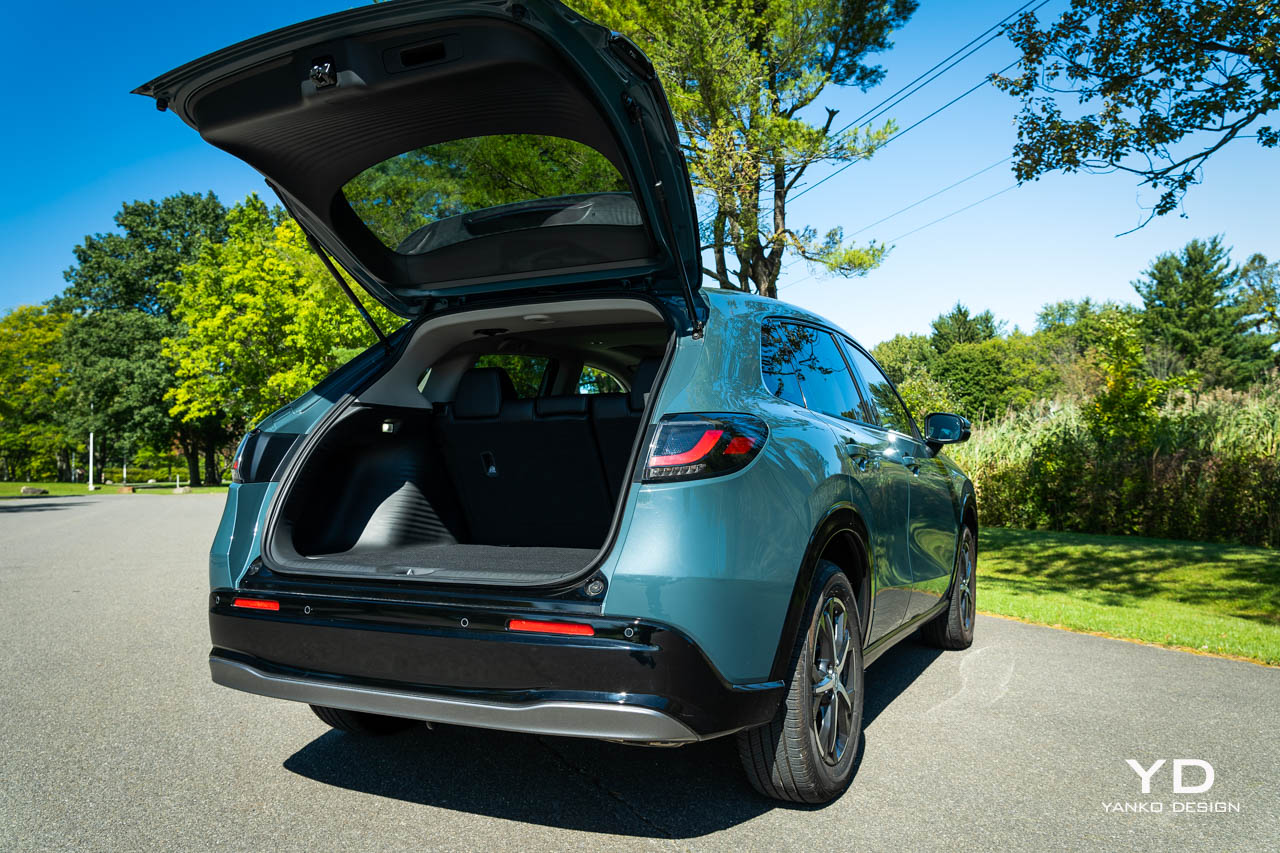
Pricing and Options
All HR-Vs come with the Honda Sensing system, which includes adaptive cruise, lane-keep, automatic emergency braking, and traffic-jam assist. On the highway the HR-V does a great job of following the flow of traffic, keeping itself centered in the lane. When it’s time to change lanes, the HR-V won’t do it for you, but standard blind-spot monitoring will at least make sure the way is clear.
There really aren’t many options. The AWD EX-L HR-V you see here had a starting price of $28,950, with that Nordic Forest paint the only option at a bargain $395. Going for FWD would have saved $1,500, while the only other options would have been different wheels and things like floor-mats.
After a $1,245 destination charge, the final price for the car you see pictured here is $30,590.
